#the suspense and horror aspect are criminally good
Explore tagged Tumblr posts
Text
The Blanched Soldier pt 2
Last time in Yet Another Unintentionally Queer Tale from the Classic Unintentionally Queer Universe, Mr Dodd had gone to see Sherlock Holmes about his army boyfriend who had mysteriously disappeared and whose family and friends appeared to be treating the guy as though he were dead.
So far we've had some A+ fathering and some B- mothering (clearly she loves her son, but also she doesn't appear to be doing anything to help her son. Does she know whether her son is alive?)
I have at no point wondered if Godfrey had been sent to Victorian Conversion Therapy. Which... what would that even entail? Something terrible no doubt.
"Clearly my poor friend had become involved in some criminal or, at the least, disreputable transaction which touched the family honour. That stern old man had sent his son away and hidden him from the world lest some scandal should come to light."
Possible, but I feel like this is too generous a view of the father. I am fully prepared for it to be that Godfrey is just mentally ill and his father thinks he'll bring shame on the family through that.

"No doubt he had fallen into bad hands and been misled to his ruin."
Hey, give Godfrey the respect of believing he could go bad all by himself. He's a grown man. He could if he wanted!
"I was anxiously pondering the matter when I looked up, and there was Godfrey Emsworth standing before me.”
Huh...
Either his father is bloody useless as a jailer, or he's not locked up in the house like I thought he was.
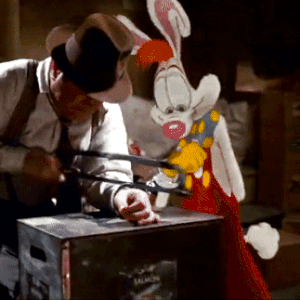
"He was deadly pale—never have I seen a man so white. I reckon ghosts may look like that; [...] he saw that I was looking at him, and he vanished into the darkness. “There was something shocking about the man, Mr. Holmes. It wasn't merely that ghastly face glimmering as white as cheese in the darkness. It was more subtle than that—something slinking, something furtive, something guilty— something very unlike the frank, manly lad that I had known. It left a feeling of horror in my mind."
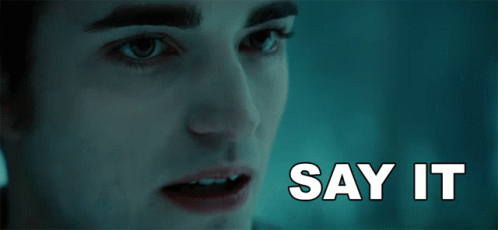
“I had a good look at the little house as I passed it, but the windows were heavily curtained..."
To keep out the SUN perhaps? Huh?
"I could not see his face, but I knew the familiar slope of his shoulders."
I'm not saying it's gay to recognise your bff by the slope of their shoulders, but I'm not saying it's not gay, either. Y'know?


As we drove to Euston we picked up a grave and taciturn gentleman of iron-gray aspect, with whom I had made the necessary arrangements.
We are indeed doing what I thought we would do in Holmes' perspective - he's just not telling us anything. Presumably in order to keep some sort of suspense. He does like a dramatic surprise, so I suppose it's not out of character. But it's very clear that he's writing for an audience here and not for educational purposes.
“I think not. It was his brow which I saw so clearly as it was pressed against the window.”
When you press against something though, your skin goes white. That's a thing. No one looks normal when their pressing themselves against glass.
I [...] contrived to bring my nose within a foot of the gloves. Yes, it was undoubtedly from them that the curious tarry odour was oozing.
So presumably he's been doing something with his hands. Medicine? Drugs?
Oh, that's 'tar-like' not 'tarry' as in a specific thing I've never heard of. That's... actually more concerning. Why has he been handling tar?
Alas, that I should have to show my hand so when I tell my own story! It was by concealing such links in the chain that Watson was enabled to produce his meretricious finales.
Lol. The lampshading is excellent.
He held our cards in his hand, and he tore them up and stamped on the fragments.

Such a respectable grown adult. Stamping his feet and having a tantrum because some people arrived at his door.
I took out my notebook and scribbled one word upon a loose sheet. “That,” said I as I handed it to Colonel Emsworth, “is what has brought us here.”
Oh my god, Holmes, just fucking tell us. Is the word the name of the illness Godfrey has?
But we do get a passage about ears... which will have to suffice, I suppose.
I think Holmes is enjoying being the narrator a little too much.
14 notes
·
View notes
Note
Do you know of any Johnlock trillers? Thanks very much as always...
Reply: First of all, thank you as always for the very interesting request. This made me take a moment to consider what a thriller is, since it's not a tag that's used very frequently on AO3.
Here’s what various writing sources say: Thrillers are dark, engrossing, and suspenseful plot-driven stories. / Thriller stories blend elements of three other genres: action, horror, and crime. / Thriller novels usually involve a protagonist who is working to fight a foreign power, criminal organization, or a ruthless villain.... The protagonist is suspended in an almost constant state of danger.
As you can see, many stories that would be a thriller by one definition are not by another. And in fact, I have a grand total of 3 fics in my 1500+ bookmarks that are tagged as thrillers... and 2 of them I wouldn't personally consider thrillers. One is too fluffy (it's also tagged as “seriously just a tropey fun fluff-bomb”) and the other leans more heavily into action (both combat and smut) than tension in my opinion.
Having said all that, here are some older lists of mine that cover at least some of the above aspects:
Page-turners
Stalker fics
Horror master list
John and Sherlock go after Moriarty's network together
Sherlock is a bit not good
Sherlock is a secret agent
And here are some additional fics not on those lists that I would also consider thrillers:
All Things Will Die, Nothing Will Die by Holly Sykes (109K, E, Johnlock) January, 1831. Something suspicious is happening at St. Bartholomew’s Hospital: corpses are brought in and sold to the surgeons, but Sherlock Holmes suspects foul play. He’s not alone: at Guy’s Hospital, Doctor John Watson refuses to pay twelve guineas for a body that he fears has been tampered with. The lives of the two men collide one frosty winter night and from that moment on, they will never be torn asunder.
and your very flesh shall be a great poem by CaitlinFairchild (151K, E, Johnlock) After a tragic confrontation with terrible consequences, Sherlock and John follow Mary as she flees to America.
hands full of matter by simplyclockwork (21K, E, Johnlock) When Sherlock is captured in Serbia, Mycroft cannot afford to involve the British government in his rescue. Instead, he sends John. After two years spent thinking Sherlock was dead, John finds himself navigating not only Sherlock’s rescue but their fractured friendship as well.
hired gun by simplyclockwork (232K, E, Johnlock) After faking his suicide in response to allegations of fraud, two years into dismantling Moriarty's network finds Sherlock Holmes in Morocco. Nearing the end of his mission, he is apprehended by a man with the mercy of a doctor, the control of a soldier, and the brutality of a mercenary.
immediate and inglorious by simplyclockwork (72K, E, Johnlock) Bodies are showing up in back alleys, with no sign of a struggle, no trace of drugs. With New Scotland Yard dumbfounded by the Grim Reaper Killer case, Sherlock is called in to consult. The more he investigates, the deeper Sherlock finds himself drawn into the work of London's newest serial killer.
Four Degrees Celsius by ampersand_ch (28K, E, Johnlock) The Reichenbach story in the original setting. Sherlock and John move their relationship to the next level at the beginning of their stay in the Bernese Alps. But as it turns out, there's no time for the two of them. Moriarty is here, and a catastrophe is looming.
Soul Set in Darkness series by BroadwayStarletQueen (87K, E, Johnlock, Sheriarty, Mystrade) Sherlock decides to give up on his life of detection to join Moriarty in a life of high-stakes crime and entertainment. His ever-faithful flatmate believes wholeheartedly that Sherlock is faking this alliance to play Moriarty and beat him from the inside, but when he finds himself pitted against the evil team, John finds himself questioning if Sherlock's playing a game or giving in to darkness...
The Baker Street series by magicbunni (199K, T, Gen) Series of 4 loosely connected casefics.
The Secrets of John Watson series by tumbleweedchaser (75K, E, Johnlock) Sherlock and John take on a new case that brings John's military history and secrets to the table. The detective is forced to understand that there is a great deal more to John than jumpers, tea, and a love of adrenaline.
63 notes
·
View notes
Text
well, here we are! june basically flew by and it was a little rough, but we’re back with some long recs on cool things i’ve read/listened to/watched, and i’m about to force everyone to sit down and listen to my sleepover-esque ted talk in which i give unwarranted and unasked for rec lists. so here we go!
kdrama:
while you were sleeping
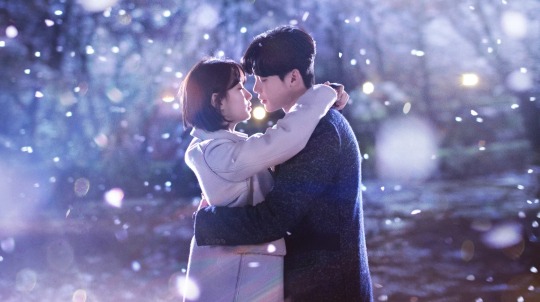
okay, so i tried to watch this kdrama when it came out in like...2017, i think? but for some reason, i wasn’t able to get past the first episode. i don’t really know why? because it’s so beautifully shot, and i super love the premise, which is basically this girl and this guy are somehow able to see things that are going to happen in the future...but only in their dreams. this whole kdrama really handled the plot super well--each episode honestly felt like a movie in itself, and the filming was just stunning, and i think this has to be one of the most visual kdramas i’ve ever seen. each character is also super interesting and complex on their own, and i really loved seeing such a strong cast of characters interact with each other in this world.
i think the only slight downside of this kdrama was that i couldn’t really get invested in the romance? i’m not quite sure why--i found both lead actors’ performances wonderful, and don’t get me wrong, i did think they were cute together as the drama went on, but i still couldn’t find myself buying into the romance until maybe relatively late in the drama (like...ep 11 or so? ep 16 was honestly when i realized that awww, wait, they’re actually super cute). but then again, i feel like the writers weren’t really prioritizing the romance either--i think they really wanted us to think about the beauty of dreams and redemption and how everyone can touch another person’s life in some significant way, so i can’t really be mad about it!
but anyways, overall i really enjoyed this kdrama and watched it all a lot faster than i thought i would! SOLID music, beautiful cinematography, good acting, mostly good writing, and some really memorable characters! def. a must-watch if you love suspense, aesthetics, and some wonderful characters.
the ghost detective
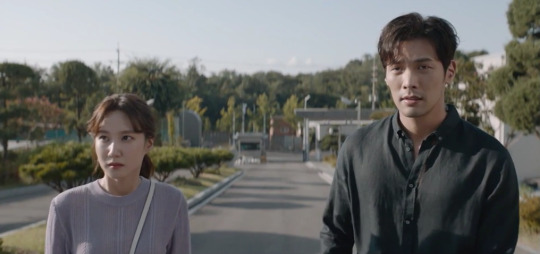
i’m someone who doesn’t like horror or scary things at all, but i was so intrigued by the plot and whatever material i saw on tumblr, and...of course, choi daniel, lee joo young, lee ji ah, and park eun bin. honestly, this is just a really wonderful and really underrated cast, and they really all brought out their a-game for this 32-episode supernatural / thriller / horror drama. basically, this kdrama follows the story of a young woman who’s trying to figure out who murdered her younger sister...and of course, there’s something supernatural going on.
honestly, this kdrama was such a ride. i loved the crime-solving aspect of it, and i was really in love with the interactions between all the characters, esp. that of eun bin and daniel’s characters. (guys...they’re so ride and die for each other. there’s also so much yearning. so much yearning in this kdrama, it just about killed me--)
the villain was absolutely, appropriately, elegantly creepy, and like...scary beyond belief. basically, the villain (lee ji ah’s character) feeds her victims these harmful thoughts and ultimately get them to kill themselves. it’s sad and haunting, especially when you see that the victims tell their victims “don’t listen to the bad things. try only to listen to the good things”. and...yeah. themes of how to handle all of these bad feelings inside of you really came through in this kdrama, and there were a lot of themes of suicide and the kind of rage and sadness that comes with that. (also! if you’re a fan of lots of angsty/whumpy situations....this kdrama definitely does not hold back with all of your fave whump/angst tropes! literally! every! episode! i! had! to! lie! down! because! too! powerful!)
school 2013
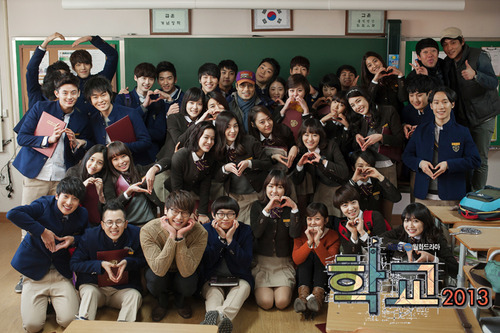
(aww, look at this precious cast…as though they didn’t all make me ugly cry at least five times—)
yeah, yeah, yeah, i’ve talked about this kdrama ad nauseum, and i know i watched it last month, but as i was studying for the lsat, i really, really, really needed some comfort. most notably comfort re: studying life, academics, how difficult it is to study but also be uncertain of your dreams…and if you are certain of your dreams, how that sometimes requires studying but that just makes life all the more overwhelming…can you tell i’ve been thinking about this a lot
i’m not going to ramble more about this kdrama considering i already have done so multiple times, but i enjoyed this rewatch and honestly,,,my love for this show has just grown even more. there’s a good reason why people consider this a comfort kdrama, because. i consider myself deeply comforted. also, i’ve been listening to the ost for the whole month. it’s become a problem. but sometimes. sometimes you need to listen to songs that feel like someone’s patting you on the head and telling you don’t give up, set down your burdens, don’t think you’re alone and dream whatever you want to dream, go wherever you want to go. i’ll stop talking now, but god. when i say that i think everyone who has ever felt incredibly tired by work or school and just wished for someone to give them a big hug either then or now...god. this is just one of those kdramas that i think honestly touched so many people’s lives, and i’m very grateful for the cast and crew and writers for ever bringing this story to life. :’) (god, okay, now i’ll stop talking before i make myself cry i’m fine this is fine)
your honor
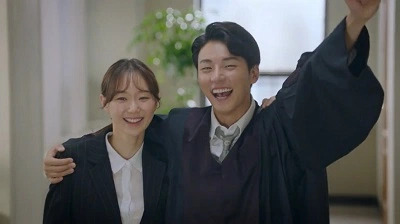
so, i watched this kdrama thinking that it would be light and funny given that yoon shi yoon is the main male lead, but boy was i wrong--don’t be fooled by these happy little faces, this kdrama is heavy. this kdrama is about a young man (with a criminal record) who winds up impersonating his twin brother, who happens to be a judge. we also have a trainee who, after seeing the legal system fail her older sister, is on the rise to dispense justice through the courts the best she can.
honestly, the first few episodes were rough, mostly because of the content. big trigger warning for rape, violence, and sexual harassment at work. this kdrama really didn’t hold back when it came to addressing how the very people who use the law can also be the very same people who manipulate and abuse it. because of that, i found this kdrama incredibly powerful. that said, it certainly had its lighthearted moments too.
overall though, i liked this kdrama. the main characters were incredibly complex and genuinely the type to make me believe that for all the injustices in the world, there are still and always will be people fighting for the right thing. as someone who wants to enter the legal field, this kdrama was just uplifting. i was so blown away by the absolute rawness of the main two leads, esp. yoon shi yoon, who i’ve only ever seen in super lighthearted kdramas. so this was a really interesting change of pace, and i genuinely enjoyed watching this!
waiting for love
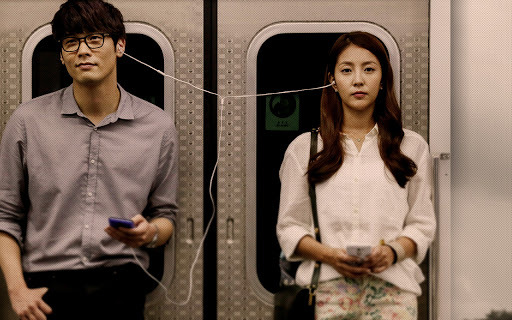
so this kdrama is just two episodes, and what’s better is that it’s available on youtube! it’s about two college students--a young woman who’s been hurt by falling in love with jerks now just wants to date, not really fall in love...and a young man who’s excellent at giving dating advice except he’s afraid that he’s never going to actually fall in love, so he just dates a girl for the sake of dating.
now, i kinda thought that this show was going to be kinda lighthearted, a little shallow--but it was weirdly...comforting? idk, i found myself liking it a lot more than i thought it would be. this is far from the perfect kdrama, and i kinda wished that we got more than 2 episodes because i think some of the plot points could have been better expanded, but...there were genuinely a lot of scenes that made me think a bit more about what it actually means to be in a loving relationship--like how it’s not enough to just put on a happy smile and eat meals together, but like...you know. there has to be trust and actual liking and also, yeah, maybe a bit of frustration in order to actually know whether a relationship is real or not. and given that the characters were all discussing the pressure on getting married and romance esp. when you’re in your twenties...idk. makes you think about are you dating someone for the sake of appearances? or do you genuinely...like them?
there was also quite a few tropes that i personally adore in this kdrama, which helped balance out the stuff i found more tiring. there was a lot of the “right person, wrong time” stuff going on (you really want the two main leads to get together after a certain point, and you just keep holding your breath whenever they walk past each other and beg please please please let it be this time...), and also that good old “two strangers fall in love with each other purely over writing to each other” (god. first the half of it, then me & au, then greenhouse podcast...something about this trope huh). that said, there were def. some parts that made me “:////” because some of the characters were kind of frustrating, but i’m gonna chalk that up to good writing since i think i was mostly mad about how i knew people like some of the characters lol. overall, i think this might be at least semi-enjoyable--it’s probably not something i’ll watch again, but it def. made me mull over what it means to actually be in a loving relationship, esp. if you’re in your twenties and everyone around you seems to be in happy romantic relationships/getting engaged and whatnot.
movie:
columbus
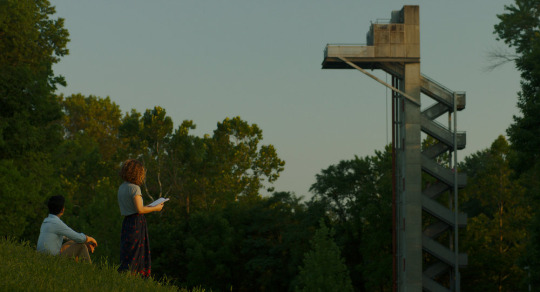
i’m a firm believer that there are some movies that are meant to cheer you up, some movies meant to make you cry, and then there’s some movies that are just meant to...sit with you. and this movie is definitely one of them. this story follows casey, a high school graduate, and jin, the son of a famous architect. the two of them are both so incredibly exhausted with their lives (casey with her constant worry about her mother, who’s a recovering drug addict; jin with his surface-level lack of concern for his comatose father). in their small town of columbus, indiana, the two of them bond over architecture and just. being quietly there for each other.
this movie’s been compared a few times to lost in translation in the sense that there’s this not quite romance between the two leads, who have a bit of an age gap (john cho and haley lu richardson have about 20 between them!). to be honest, i didn’t really get the sense that there was supposed to be a romance. if anything, it just felt like...two really lonely people finding each other. definitely not a simple friendship--definitely not a familial kind of relationship, definitely intimate.
idk. i think this movie might not be for everyone--i definitely agree with a lot of past reviewers that this movie is on the slower side. there’s some stuff here about complicated relationships with parents, a lot of cool architecture, really beautiful shots...and overall, it’s just...quiet. it’s lovely, and i can’t really stop thinking about it. it’s subtle, bittersweet, and oddly compelling. might not be the kind of thing you’d want to watch in the middle of the day, but if you’re a little sad and in the mood for something not to necessarily lift your spirits but...at least acknowledge them and sit with you, then...this is the movie to watch. idk. i felt kind of crummy the day i watched this movie, and i felt as though someone just sat next to me on a park bench until the sun went down. (mayhaps specific but hush, i’m writing this right after finishing this movie, so i’m...feeling a certain way.)
wish dragon
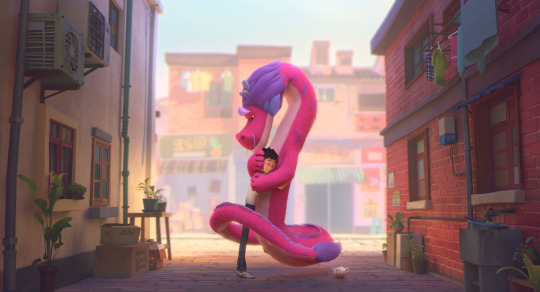
i watched this movie right after watching columbus because a) decided i was in the mood for something lighter, and b) i learned that john cho?? voiced?? the dragon?? (caroline your crush on john cho’s jumping out this month...)
but anyways! i loved this movie a lot. it was so satisfying? like, just narratively speaking? and the animation was wonderful and also weirdly smooth and satisfying, and there were a lot of funny and touching moments. this movie’s about this young man named din who stumbles upon a magical teapot that holds the wish dragon long--long has to grant din three wishes, and yes, i know, very aladdin, but that said, this movie has so many original twists that it feels weird to call it an aladdin retelling. it really did feel like a movie completely on its own, which i applaud the writer and director for!
i don’t want to spoil too much of this movie, but something i really enjoyed was that din’s main wish is just to see his old childhood friend again. idk, i think we all have that one friend from when we were really little that we miss--and this movie really dug into that, as well as themes about parents wanting to do the best they can to provide for their kids, and!!! and long the dragon gets his own storyline and amazing character development too!!! i was honestly just amazed at how this movie fleshed out the characters so well and had so many wonderful themes that just made me tear up. guys. this movie’s great. highly recommend for its wonderful characters and the power of friendship. just a grand old time in general. :’))
searching
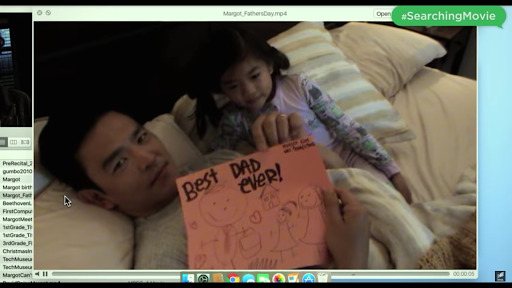
yeah...yeah, i wasn’t kidding about my crush on john cho this month. yes, i watched three of his movies within 24 hours. this movie is about david kim who’s looking for his missing 16 year old daughter, margot. this film is honestly noteworthy for many reasons, one of them being that the entire movie is told through like...a laptop screen, as in we kind of follow david’s frantic search through facetime, facebook, tumblr...which i honestly didn’t think i’d be into, but whoo boy, i was wrong. it just added to the whole addictive quality of this movie, as it usually does when it comes to anything from the thriller genre.
but besides this just being a straight up addictive thriller with absolutely mouth-dropping twists (but like...good twists, and smart twists, good god--), this movie was just...touching? there’s so many themes related to what grief does to a family (because we learn within the first 10 minutes that the mom died due to cancer), and there’s just...something really fragile about relationships between surviving family members. i was absolutely blown away by john cho’s performance as a tentative and grieving widower whose world just absolutely falls apart in his search for his daughter. this movie was just so...real because of that. like, yes, this movie has all of the suspense that you would expect this kind of movie to have, but there was also just...so many beautiful themes about grief and how far parents would go for their kids and godddd yeah no i started sobbing when the movie ended. god.
also, my bias towards john cho aside, i...really loved his character. david kim is absolutely believable, and like? he’s not just the guy putting the pieces together--he’s also the guy who misses his wife and also the guy who wishes that he was there for his daughter. he’s also the guy who pauses and re-writes all his text messages because he’s trying to be a good dad. i feel like with a lot of these suspense / missing person movies, it’s really easy to have characters who are just the stoic alpha male types--and david kim definitely had his badass moments in this movie, but like...something i just loved was seeing the vulnerability that comes with...having a missing child. being a parent. god. this movie messed me up but in a good way. i can honestly say that this movie is now probably going to be one of my fave movies of all time. highly recommend, am literally obsessed with it.
book:
the seven husbands of evelyn hugo by taylor jenkins reid

ohohoho………where to begin with this book. this was one of those books where i was like “huh i kinda don’t understand why people are so obsessed with this book”, but then i hit like...page 20 or 30 and was like “oh god i Literally Cannot Put This Book Down Oh No” and wound up finishing it in like three days (mind you, i only read at like...midnight these days. i don’t understand why either).
i finished this book at like 2 am and promptly burst into tears because this was just one of those books. it follows the story of evelyn hugo, a famous hollywood actress from the 60s or so and onwards. known for her intense beauty and her seven husbands, she’s now giving an exclusive interview to the young reporter monique grant, where she’s about to tell all about her life. this book had me dropping my mouth multiple times, and i think tjr can spin one hell of a story, with so many good twists and turns and intensely memorable characters. by the end of the book, i was actually mad that evelyn hugo wasn’t a real person, because i, too, fell a little in love with her and thought, i want to actually watch her movies. i want to learn even more about this remarkable woman.
but alas! she’s not real, so i don’t get to see her accept an oscar or look up all the tabloids about her and her seven husbands or her speculated (and very, very, very real) relationship with celia st. john. basically...i just loved this book. the last line made me smile and laugh and cry a little bit (actually...cry a lot), and y’know...i’ll admit it’s not totally perfect, but i’m glad this book exists, and i’m glad that even though tjr isn’t bi herself, was very adamant in this book about bisexuality being real. just. like. god. once again. mad that evelyn hugo isn’t real. it’s fine, she’s real in my heart.
14 notes
·
View notes
Text
‼️ TRIGGER WARNING ‼️
this blog includes triggering content such as thinspo and talk of food / weight loss / gain. if you are trying to recover, please turn around and forget you ever saw this. if you are a minor OR you have just recently started to develop disordered eating habits, again, please stay away from my page. this is not only for my own personal motivation and rants, but also to help me relate to people who have struggled with this illness for as long as I have--to help me feel validated, understood, and comforted. I do not encourage this behavior, and if you've randomly stumbled across this blog and think that restriction, purging, starving, overexercising, or etc. is a "quick and simple" way to lose weight, then seek an audience with a professional at your earliest convenience and, please, steer clear of my page and my posts at all costs. if my page is or has or might make you worse or encourage your destructive behavior, please block me.
now that that's been said... intro post or whatever—
info pertaining to my ed / standpoint here;
I’ve had an unhealthy relationship with food for longer than I can remember, but it got really bad in 2015. I consider that the “anniversary” of my actual disorder ig, but I've struggled since childhood.
I’m not new to the ed community, specifically on tumblr, but I was deleted a few times. I relapsed sometime in the beginning of 2020 ( not the first time ), so here I am, yours truly, once again.
I should also add that I’m not proana / mia / any other ed & strongly support recovery for anyone considering or trying, I’m really just hoping to get my own thoughts and struggles out there rather than locking it all in and ‘dealing with it alone.’ statements like that are said so much around here, but seriously—if my account will make your mental health worse, just spare yourself and get out; block me, avoid my account, whatever you need to do.
info not pertaining to my ed / standpoint here;
my name’s c ( they/them pronouns please ). avoiding spelling out the entire name bc people irl can easily find me here, and we don't want that!
I currently live in America, but within the next 2-3 years, I hope to move out of country.
I’m 18 as of 2020 and I will be majoring in criminal psychology sometime in 2021-2022 ( if things go according to plan. ) for now, I’m working on getting a degree + a good paying job so I can have a steady income by the time I start my studies again.
hence my choice in long term career, I am a fan of true crime; primarily the serial killer aspect. but no, I don’t romanticize them and I am fully aware that the crimes these individuals have or do commit are grotesque and harmful.
I can make some pretty dark jokes via my own trauma and other shit that probably shouldn't be joked about, but honestly, just don't take anything like that literally when coming from me.
my favorite genres are horror, suspense, and action. I love to read, and I also dabble in writing short stories. I used to be in the roleplay community, but am no longer in that space. I also plan to write a novel of my own one day, but settling on a solid idea and going with it will probably take a long time, so no promises or expectations there.
my music taste varies, shoot me a suggestion and i’ll probably be able to get into it. legit—find a new song and randomly want to share it with someone, but don't know who? send it my way, I'll listen and, if you want, even let you know my own opinions and shit on it.
don't be afraid to send me asks / crazy questions or anything of that sort, and it doesn't even have to be strictly ed-based. promise I can be quite friendly when encouraged!
21 notes
·
View notes
Note
Sunflower anon here(I asked about book recs earlier)! When it comes to YA I’m mostly into sci-fi, and sometimes fantasy. In terms of “suspense”, that’s mainly horror and mystery books. And I’ll take recs for YA and adult, whatever you have in mind! I finished my quarantine reading list last week and as much as I love re-binging CM, I do miss reading new books! ~🌻
Ooh good okay! Also, what’s it like being able to finish your TBR? I’ve forgotten what that’s like lol I have over 200 books on mine 😩
YA (Mystery):

I highly recommend this series. It has a historical element to it as it takes place in the late 1800’s but it’s about the main character Audrey Rose who is very much into pathology and performing autopsies, much like her professor uncle who is a skilled pathologist. It’s edgy because it’s definitely not proper for a girl in that time to take such an interest in morbid things, especially when she starts aiding her uncle in murder investigations. I’ve read the first 3 and am on the fourth and last book and can honestly say this series is EXCELLENT for mystery lovers.

This is a mystery AND horror combined, also with a historical aspect to it as it takes place in the 1920’s. It’s probably one of the creepiest book series I’ve read and probably this is my creep limit. The main character Evie is sent to live with her uncle in New York City after a little “party game” of her hidden talent—being able to read people’s secrets from their objects—goes wrong. But she gets involved with helping solve murder mysteries when strange occurrences start happening, which seem to have an extreme supernatural origin. I’ve finished this series but man was it good.

I’ve also finished this series, but this is another mystery series that follows the main character Stevie as she starts attending this elite academy—Ellingham. She’s fascinated by the history of it and the murder and disappearance that took place there back in the 1930’s, the murder of the school founder’s wife and the disappearance of his little girl. Stevie is a true crime buff and loves to solve mysteries, one reason she’s going to Ellingham is to solve the age old mystery of the school. But she’s in for a big surprise when bodies start dropping in the present day leaving her with not only one mystery to solve but two. This is told in alternating timelines, back in the 1930’s and then in present day.
YA (Fantasy):

I know you said you sometimes read fantasy so instead of recommending a series, I figured I’d go with a stand-alone, something that’s rather rare in fantasy. This follows Elisabeth who is training to be a warden of the magical library. It involves a magical library, sorcerers, demons and magic. It’s hard to say too much because I don’t want to spoil.
YA (Horror):

This one is probably more disturbing type of horror than scary. It’s reminiscent of Lord Of The Flies. There’s a sickness on the island that causes awful reactions in different people. I can’t remember much more but I did enjoy it.
YA (Sci-Fi):


These two I enjoyed as well. Illuminae deals more with the space side of sci-fi when the main character’s planet is attacked and she and the other living residents are forced to flee the enemy on two space ships. In the mean time, they also face a deadly plague (maybe not the best to read if it’s too triggering in current times) and a faulty Artificial Intelligence that seems like it may be their enemy more than their friend.
Girl Gone Viral is more on the Virtual Reality side of sci-fi. The main character Opal is an excellent coder whose father went missing mysteriously years ago. As a way to find answers, she enters this contest in which the winning prize is to meet the billionaire owner of the company who is hosting the contest—also someone who worked closely with her father years ago—to find out what really happened to her father. There’s also really cool virtual reality aspects within the book as well!
Adult (Mystery):

Okay this may technically be more categorized as a thriller but I swear this reads like an episode of Criminal Minds. There’s a chain one must follow. When a kid is kidnapped, the main character is contacted by the kidnappers and told that the only way to get their child back is to kidnap another child within the next 24 hours. Their child will be released ONLY when the victim’s parents kidnap another child. It’s so confusing and so brilliant and the BAU is mentioned in this too lol. But one thing that’s always mentioned: Once you’re part of the chain you absolutely, cannot break the chain.
Adult (Sci-Fi):


Okay these two I absolutely loved. I’ve loved everything I’ve read from Blake Crouch. I can’t even describe these books other than saying you just have to read the synopsis on your own because they’re just mind blowingly brilliant. I do believe that Dark Matter is about how there are other parallel universes though it’s just those type of books that you sit back constantly feeling bamboozled like what the fuck am I reading? But in such a great way.
I hope this helps!
7 notes
·
View notes
Text
Recommendations!: Netflix
I get asked a lot for recommendations. With that in mind I wanted to start a new feature here at Concession Stand called “Recommendations!” which will be a list of 10 or so movies on any given streaming service or maybe even physical media. For the first of these let’s go with the biggest service out there, Netflix.
(These are in no particular order)
10. Tucker and Dale Vs. Evil
Genre: Horror, Comedy
Released: 2010
Starring: Alan Tudyk, Tyler Labine, and Katrina Bowden
Synopsis: A group of college kids go camping near where Tucker and Dale, two redneck friends, have purchased a cabin in the woods. When one of the college kids falls and hits there head and is taken in by Tucker and Dale, a misunderstanding spirals out of control.
My Thoughts: Probably the pinnacle of horror comedy this movie nails it on all fronts. It’s hilarious, intense at points, and delivers an amazing story that would be good even without the comedy.
9. As Above So Below
Genre: Horror
Released: 2014
Starring: Perdita Weeks and Ben Feldman
Synopsis: A group of explorers travel into the catacombs of Paris where they discover dark secrets and what may be an entrance to hell itself.
My Thoughts: This. Movie. Is. Intense. I know a lot of people will be turned off by the hand-camera aspect of it, but it’s not just a gimmick, it works in this movie. it’s one of the few movies that really stuck with me and got genuinely creepy.
8. Creep
Genre: Horror
Released: 2014
Starring: Mark Duplass and Patrick Brice
Synopsis: A videographer takes a one-day job to record the last words of a dying man, however when the man starts to behave strangely the videographer has to question the mans true motives
My Thoughts: Another hand-camera movie, but again it works in and for this movies benefit. Another one where one scene in particular really got me with a true what the hell am I watching holy crap moment. It and it’s sequel are worth your time.
7. Enemy
Genre: Drama, Thriller
Released: 2013
Starring: Jake Gyllenhaal
Synopsis: A college professor discovers an exact look alike for himself in a movie. After hunting him down and learning of the others life, things spiral out of control
My Thoughts: I gotta prefece this movie wont be for everyone, it’s weird. A lot of it wont make sense on first viewing. HOWEVER, this to me is why it’s so good, it’s one you’re gonna wanna look up what other people got from it and talk about it with your friends. Also you get double Gyllenhaal so that’s always a plus.
6. Super Dark Times
Genre: Crime, Drama
Released: 2017
Starring: Owen Campbell, Charlie Tahan, and Elizabeth Cappuccino
Synopsis: Two teenagers experience a gruesome accident that leads to a cover-up and a secret that drives a wedge between them and knocks them into a world of escalating paranoia and violence.
My Thoughts: This one came out of nowhere and I’m disappointed more people haven’t discovered it yet, it’s a great crime thriller. The kids in it are phenomenal in the roles and can be genuinely scary with how good they play these kids who have to cover-up something horrible. Go in blind to it and I assure you you wont be disappointed.
5. Good Time
Genre: Drama, Crime
Released: 2017
Starring: Robert Pattinson, Benny Safdie, and Jennifer Jason Leigh
Synopsis: After his brother is arrested in a robbery gone wrong, a man has one night to try to get him out of jail by any means necessary
My Thoughts: I’m so glad “Uncut Gems” was such as hit for the Safdie brothers because hopefully that means more people will look into “Good Time”. This is the movie I will forever throw out whenever anyone wants to question Robert Pattinson’s acting abilities. He disappears into this role as a criminal. So many great things here, the acting, directing, score.
4. Green Room
Genre: Horror
Released: 2015
Starring: Anton Yelchin, Imogen Poots, oh and Patrick Stewart as the head neo-nazi (yes seriously)
Synopsis: On the tour that took them to the west, a D.C. based punk band ends up inadvertently playing a neo-nazi club. When one of the members enters the green room after they have packed up, he discovers a murder and the band ends up in a stand off with the neo-nazis.
My Thoughts: Oh Green Room, how I love you. Just writing this I want to immediately go watch it again. I’ve recommended this movie a lot and everyone whose seen it has come back saying they loved it. It is the definition of an edge of your seat thriller. Also, did I mention the beloved Patrick Stewart plays a neo-nazi?!? it’s wild. He said in an interview that just reading the script he had to turn on all the lights and kept looking out his window.
3. 13 Sins
Genre: Thriller
Released: 2014
Starring: Mark Webber and Ron Perlman
Synopsis: After receiving a strange phone-call promising him riches if he can complete 13 task, a man is sent on a disturbing journey where each task is more sinister than the last.
My Thoughts: Another one that came out of nowhere, I hadn’t even heard of it before watching but man did I love it. It’s a great thriller that really sucks you in and makes you worried for the characters and invested in everything happening. Also makes you question what you would do in their shoes. There is a lot of those “do something crazy for money” movies out there but this is hands down the best.
2. The Invitation
Genre: Horror, Suspense
Released: 2015
Starring: Logan Marshall-Green, Tammy Blanchard, and Michiel Huisman
Synopsis: A man and his new girlfriend are invited to a get together at his ex-wife’s house with all his old friends. However, the true intentions of the host are unknown.
My Thoughts: This movie reminded me why I love movies. I was so happy after watching and just remembering why movies can be so great. While it may not be as ambiguous if the host are actually dark or normal, I assure you you will just love the ride.
1. The Guest
Genre: Action, Thriller
Released: 2014
Starring: Dan Stevens and Maika Monroe
Synopsis: A mysterious man shows up at the house of a family whose son has recently died in the military. Claiming to be a friend of the sons, the man gets closer and closer to the family, however not all is as it seems with this new mystery man.
My Thoughts: I have been singing this movies praises since 2014. Made by the same team behind “You’re Next” it’s really hard to decide which is better. What I do know is Dan Stevens kills it in this movie and it’s one hell of a ride.
So those are just some of the great hidden gems on Netflix. I had a lot of fun doing this and may just do another one going over another 10 on Netflix or another streaming service. Let me know which you would like!
6 notes
·
View notes
Photo
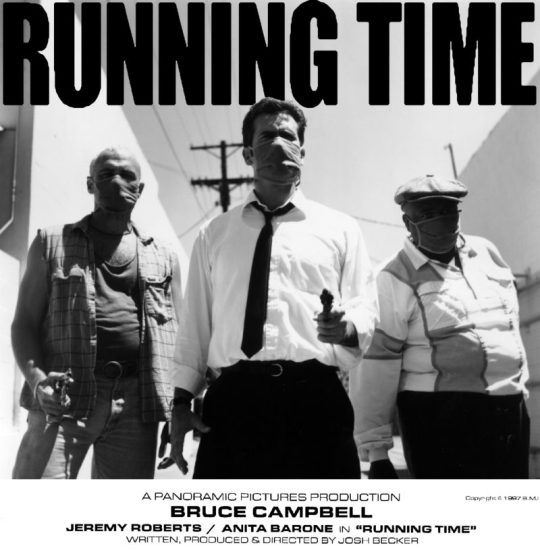
Running Time Restored Interview: 1997 Josh Becker and Bruce Campbell Indie Gets a New Life in 2K.
You can read the full interview on the upcoming release With Josh Becker, Bruce Campbell, and Don May Jr. from Diabolik Magazine below.
In 1995 on New Year’s Eve, Josh Becker had an idea. Born out of a session pondering Alfred Hitchcock’s legendary, true crime classic, Rope, he decided that he was going to improve upon the master of suspense’s legendary concept of shooting a film in real time. A daunting task but Becker was up to the challenge.
What resulted was perhaps one of the most ambitious efforts to ever grace the silver screen, Running Time. This neo-noir thriller about a heist gone wrong and a small-time criminal who rekindles his love affair with his high-school sweetheart was a hidden gem that didn’t get the recognition that it deserved. Written expressly for Becker’s childhood friend and Super 8 cohort, Bruce Campbell, the pair were once again, doing gonzo-style filmmaking just like when they were growing up in Michigan with the likes of Sam Raimi and Rob Tapert.
Josh Becker was and is an adventurous soul who does things his way, just like the director gods of old. When I think of his work, the names of John Ford, William Wyler and John Huston readily spring to mind. There is something admirable about his driven determination that was the heart and soul of this black and white throwback to another era which is ultimately endearing. Yes, I have a special place in my heart for Running Time because it is honest and not filled with “tentpole” tendencies. At the core of it is the written word. The end result is one of the most overlooked masterpieces of both Becker’s and Campbell’s careers.
What is truly amazing is that this flick was shot in two weeks and that everyone went home early. It was like having a 9 to 5 job. No 18-hour-days, just fast, efficient, run and gun style filmmaking that resulted in a production that could stand toe to toe with noir classics from a bygone era like The Petrified Forest and Desperate Hours.
Prior to Running Time, Bruce was known predominantly for his work in the horror and science fiction genres which can sometimes be limiting for an actor. Becker gave him an incredible script to work with that really showcased his range as a thespian. Behind the smart-ass quips and bravado lies a talented individual who takes his craft seriously. He is capable of creating complex characters and he is most assuredly fit to be a romantic lead.
I had the chance to sit down with the major players in the restoration of Running Time (Josh Becker, Bruce Campbell, Don May, Jr. and Gerry Kissell) to reminisce about the journey of this film from its humble beginnings to preserving this indie classic for future generations.
The Director and His Muse
Diabolique: Bruce, I have to start off by telling you that Running Time is my favorite out of all of your films.
Bruce Campbell: It’s a cool, little flick. Too bad it sort of escaped, it wasn’t released as the old joke goes.
Diabolique: What I like so much about it is the neo-noir aspect. It’s a throwback to the 40’s and 50’s. In Josh’s book, Rushes, he talks about how he convinced you to be in the film. You weren’t getting paid and you invested in it. What was his pitch, how did he sell the concept to you?
BC: The pitch was that it was NOT McHale’s Navy. I just spent 11 weeks in Mexico just sort of bullshitting our way through that film where we would make up our lines of dialogue because there was nothing written for us. In the script it would say things like, “McHale and his guys get off the boat,” “McHale and his men go to Cuba.” Which means they hadn’t thought anything up for you. I did it because I liked the show as a kid. It was a very popular thing; it was from Universal. It made sense at the time. It was just a case of when something is underwritten, the problem that it causes actors. I had just come off of that, and Running Time was very ambitious, low budget it was meant to be this conceit of being done in one shot so it was cinematic. So, I was like, okay, yeah. It was like the anti-studio movie, small crew, fast moving and yet no money. Basically, I invested the money that I was paid back into the movie in order for them to make it. It was definitely for a love of the movie type deal.
Josh Becker: I’ve known Bruce since we were twelve and I’d seen him in a number of plays. I knew that he had a much bigger range as an actor than he’d had a chance to show at that point. Plus, he’s a pleasure to work with. Once I pitched him the idea, he was all for it, partially because the long takes are a way for an actor to really show their ability.
Diabolique: Thinking about your filmography, Bruce, you haven’t played a traditional romantic lead. Do you see Running Time as a love story of sorts?
BC: What’s funny is Josh had Carl come back. In a proper film noir, he would have gone, you would have heard the tires squeal and she would be sitting there crying and the credits would roll and that would be it. It would be bleak, but Josh deep down is a sentimentalist and I think I am too. We had no issue with the happy ending. We wanted to make the audiences think for quite a long period of time that it’s going to be a sad ending. She packs her bag and then she unpacks it. The whole thing is quite an extended piece but I thought it was well worth playing just to kind of throw a little wrinkle in it. Maybe even in a criminal story you can have a happy ending.
Diabolique: In terms of the storyline, Josh, we all know that Rope was the blueprint for Running Time. You hadn’t made a film in 7 years. What was it about that production that captured your imagination besides the challenge of the “long take”?
JB: Part of my inspiration was simply getting another feature film made after seven years of working in television, which was never my goal. But as I thought about Rope, I wondered why the continuous, real-time concept didn’t really have any impact on the story. Then it occurred to me that there was no time element involved. Two young men—ostensibly Leopold and Loeb—have killed another young man for the fun of it, put the body in a chest, then invited people over for a party, including a cop. Well, if the chest was spring loaded and had a timer on it so that at some point it would pop open and reveal the corpse, that would be a time element. So, I thought, how do you use the real time technique and add a ticking clock? The first story that came to mind was a heist which generally has a time element—we’ve got to get the money and get out of here before we’re caught.
Diabolique: Running Time was shot in sequence like a play. Did it pose any challenges for you as an actor?
BC: I liked what Josh was trying to do. These long uninterrupted takes from an actor’s point of view, you know stuff can get really choppy these days. My complaint from Burn Notice is they wouldn’t let a full sentence stay on camera; they would have to cut away to somebody else. It felt like they had to keep cutting, cutting and cutting. This movie was no cutting for like ten minutes at a time. It’s great from an actor’s perspective because you can feel the juices flowing. It’s like a play. You can work on the pacing; you can have something build over a period of time and minutes to play out in literally real time. It’s a real time crime drama. I liked it conceptually and it was challenging. There was a fair amount of dialogue because my guy, Carl is calling the shots. I thought it was a good premise. Guy gets out of prison turns right around and robs the prison because he knows how the prison laundry system works. I thought that was pretty sound. I am always sympathetic for the low budget independent movie. I always will be.
Diabolique: Were there any other films that influenced you and your writing partner, Peter Choi? The entire concept is very noir and the desperate situation that Carl finds himself in is reminiscent of any number of films from the 1940s.
JB: My main inspiration was Straight Time with Dustin Hoffman, an overlooked movie from 1978. And though I didn’t think of it at the time, several folks brought up Joseph Lewis’s Gun Crazy after it came out, and I do see that. The film has one long take in it during a bank robbery, and even though the camera stays in the backseat of a car, it has that same feeling of a real time event.
Diabolique: I know you are a fan of classic movies, Bruce and in a sense Running Time reminds me of Desperate Hours or The Petrified Forest especially when the robbery is botched and the situation is escalating in the enclosed office. Did you find any inspiration from the noir genre for your portrayal of Carl?
BC: No, but the classic tough guys were always awesome. We loved them all, Bogart and Robert Mitchum…the fact that Josh shot the film in black and white was perfect. Because it really helped lend itself to a look of that time period when Jack Palance was a leading man.
Diabolique: In your book Rushes, you talked about your decision to shoot in 16 mm Kodak ASA 64 black and white stock. You get sharper images due to the finer grain of the film, but did that pose any problems in terms of showcasing your work at that time since most people weren’t shooting in black and white?
JB: I didn’t think of it regarding showcasing my work. I thought it was appropriate for the subject matter and that it would be visually striking. Also, moving the camera from inside to outside in color posed the problem of adding or removing filters which would not be an issue with black and white.
Diabolique: You shot over a period of 10 days which was unheard of even back in the 90’s. How were you able to keep things moving along?
JB: It was based on pre-planning. I knew exactly what I wanted. We rehearsed the film and the actors were all very comfortable with the dialogue. Then it was just an issue of getting the complicated camera moves in regard to the actor’s blocking to work right, and that didn’t turn out to be all that difficult.
Diabolique: As an actor, did you enjoy working on an accelerated timetable?
BC: It was exciting to do and so different. The toughest thing was the technical demands. It wasn’t like there were explosions and stuff like that. But in order to do blocking inside of an apartment, the camera is moving in circles, well, the crew had to move every object behind the camera before it got there and then had to put it back before the camera saw it again. So, there was a lot of voodoo, a lot of magic. We would rehearse and rehearse and rehearse and we could never get it right. Finally, we were like fuck it. Let’s just start shooting because everyone gets a little more alert when you shoot. That did it. That allowed us to conquer the impossible. After 3 or 4 takes if we got it, we were done even if it was 10:30 in the morning. I don’t think we spent more than two thirds of a day getting that particular shot. The end result is cool. I’ve seen the cleaned-up version without all the scratches and the dust marks. You can’t even tell what year it is. It almost seems like its videotape transferred like those teledramas of the 60’s that were done on TV. There were moments in the film that weren’t perfect, and that’s okay.
Diabolique: When I revisited Running Time recently, I was impressed with how well it holds up because some efforts don’t. With the 2K restoration, Bruce, this will give your fans a chance to see it. For some, it might be their first time. Do you have a scene that you are particularly fond of?
BC: There’s some scenes that are fun to do. After I get shot, I am in Janie’s apartment and she’s trying to put me together, that fainting on the toilet while she’s trying to patch me together it felt kind of real, playing shot and being delirious. Stuff like that. Just fun to be able to take the moment to do it.
Diabolique: Josh, do you feel shooting in black and white made the 2K restoration more challenging?
JB: Slow speed black and white film stock has a lot of silver in it which creates an inordinate amount of static electricity. When I did the initial film transfer back in 1997, the negative kept getting covered with dust, causing us to have to stop and clean the film every 30-60 minutes. Since the transfer was $375 an hour—in 1997 dollars—I could only stop so many times before it became financially prohibitive. Dust on a black and white negative shows up as white dots. Using the newest technology, Don May was able to remove all of the dust digitally. Therefore, the film has never looked as good as it does now.
Diabolique: What excites you the most about Running Time getting restored, Bruce?
BC: I am always happy when something gets re-released which means in this case, it gets preserved. It will look fantastic in 2K. That’s why with all these reissues fans are like, “Why should we care?” Like well, if you care about preservation, this means it will be the latest version of a movie that is fairly obscure. Sometimes a movie can die on the vine because no one will pay the money to keep it current. Now, we can show the sucker, hopefully, anywhere.
Diabolique: Josh, do you have any plans to showcase Running Time once the restoration is completed? This is a great film that fans should definitely see.
JB: We have no plans at the moment, but then the film isn’t out yet. When it’s done, we’ll see what happens.
Breathing New Life into Running Time: The Art of Restoration
Don May, Jr. along with Jerry Chandler and Charles Fiedler created Synapse Films in 1997. Known for their work in preserving unique genre classics, May had previously collaborated with Josh Becker when his company restored the director’s 1985 production, Thou Shalt Not Kill…Except.
Gerry Kissell was the official artist on Running Time and will be reprising his role for the 2K restoration. He has been friends with Josh since the Freaky Film Festival where he and Bruce premiered the film on the University of Illinois campus.
Both gentlemen were kind enough to take time out of their busy schedules to talk to us.
Diabolique: Were you able to obtain the original negative for Running Time?
Don May, Jr: Yes, thankfully. Josh Becker is a true movie fan and loves the filmmaking process, so we were fortunate to work with him. He kept everything stored properly in a climate-controlled vault, as a man who cares about his movies should.
Diabolique: Can you talk about the scanning process for 2K?
DMJ: The 16mm negative was separated into A/B rolls, so we had to scan a lot of reels separately at Prasad in Burbank, CA. Luckily, because of the actual nature of the “one-take” aesthetic Josh utilized, there were only a total of about 30 cuts in the entire film… hidden in editing, of course. So, we basically scanned the 30 separate shots, and then assembled them digitally using DaVinci Resolve. We had to be VERY careful the way we put the 30 cuts back together, making sure the shots were frame accurate and of the proper length. Unlike a film that has a conformed negative separated into 10- or 20-minute reels, Running Time was all in separate pieces, with each shot edited on separate reels. It was a challenge, but we were able to use a previous master as a reference and most of it went together without a hitch. Being shot in B&W also helped in color correction to hide the edits properly to make the real-time aspect as seamless as possible. Once the film was properly assembled, we were able to ship everything off to India for restoration. Because Josh had everything stored properly for decades, the negative itself was fairly free of a lot of dirt and scratches, but we did carefully sonically clean all the pieces before scanning commenced.
Diabolique: How long does it take the digital artists to fix debris or scratches on the original negatives?
DMJ: There’s a lot of data wrangling involved. Copying data for safety. Making backups, etc. But we have a great working relationship with Prasad. They have worked on such classics as Lawrence of Arabia, How the West Was Won, A Fistful of Dollars, Gandhi, The Red Shoes, etc. They do the lion’s share of my output, and I put a lot of trust in them. They’ve never failed me. We do ship the film scans to India and that takes time. I think Running Time took about 4-5 months. I let them take their time, though, because I don’t want to have to keep sending things back for fixes. With Running Time, they did an excellent job, right from my first restoration test reels. But, again, Josh had taken very good care of his materials, so it wasn’t much of a challenge.
Diabolique: Gerry, what artwork did you originally provide for Running Time and what can we expect from you for the 2K restoration?
Gerry Kissell: I did promotional art that ended up on tee-shirts. It included the shot of the three main characters, which I called Tres Hombres, on one, Jeremy Roberts aiming the pistol at the camera on another, and the last, which you’ve seen of Bruce’s mug all heroic and chinny. All of the art was done on Bristol cold press illustration board. The new painting for the Synapse release is me, 20+ years later, a tad bit better at drawing and painting, lol.
Diabolique: Besides the idea of preserving Running Time, Don, what attracted you to the project?
DMJ: We had worked previously with Josh on Thou Shalt Not Kill…Except, and we had a lot of fun with that one. I like working with Josh. He’s a great guy, and I love that he’s so passionate about film. He loves movies, and he loves MAKING movies. It’s so great to see people like Josh doing things like Running Time, back when using computers to do a “one take” approach was non-existent. You see things today like the film 1917, which is a fine film in its own right, but they cheated a lot of its “one take” aspect using computers. Josh did Running Time, but used his brain, and actual organic film splicing and editing to achieve the same result. He’s smart, funny, talented and I love working with people like him. It also doesn’t hurt that Running Time stars Bruce Campbell, so… yeah… of course, we jumped at the chance to do it.
Diabolique: When can fans expect to see the Running Time 2K restoration?
DMJ: I would imagine late summer/early fall 2020. We’re wrapping up extras and artwork now.
11 notes
·
View notes
Text
Running Scared: Genre and Themes
Alright, so it’s pretty obvious that Running Scared is a buddy-cop movie. Like I’ve mentioned in previous articles, it basically checks off the traditional story-elements of a buddy cop movie pretty methodically, except the part where the two cops disagree. Besides that difference, the film doesn’t really stray from the beaten path of the genre it’s in, albeit with more emphasis on the buddy than the cop.
But that’s not all there is to a movie.
You may have noticed in our introduction article to Running Scared that under genre, I put an entire slew of possible genres, including action, comedy, crime, and thriller as well as buddy-cop. As I’ve mentioned before on this blog, genre isn’t as cut and dry as a list of traditional tropes, and it’s certainly not totally reliant on the setting. A story set in space isn’t necessarily a science-fiction story.
So what does determine genre?
In my opinion, it boils down to two things:
What kind of story is being told?
What kind of protagonist are we following?
To start, let’s work on answering that first question. What kind of story is Running Scared?
Let’s take a look. (Spoilers below!)

So, right now, we’re under the assumption that yes, Running Scared is a buddy-cop movie. Which, it is. It’s a movie about two cops. But so’s Dragnet, and it’s really hard to say that’s the same kind of movie as Lethal Weapon. In other words, just because it’s a buddy-cop movie, doesn’t mean it isn’t anything else.
One of the ideas that we’re pretty big on here is the idea that no film is simply one genre. (Except maybe 2001: A Space Odyssey.) There are action-comedies, there are horror-mysteries, there are even adventure-dramas or science-fiction-fantasies. Even movies that can be boiled down to story elements of two genres usually still take hints and nods from others. Basically, all of the genres I listed above for Running Scared? There’s no saying that only two or three are accurate. Our plan is just finding out what genres it’s the most like.
Starting with action.
The ‘80s was the time of the huge action scenes, ranging from the suspense of watching Indiana Jones get drug under a truck in Raiders of the Lost Ark, the thrill of watching John McClane swing through a window from a fire hose in Die Hard, or the satisfaction of watching John Matrix take out a truly ridiculous number of henchmen in Commando. The action sequences were usually big and bold, the centerpiece of the movie, the reason the audience is coming out. In most of these cases, the audience is coming to watch the protagonist fight the bad guys, usually physically. In Running Scared?
Are there action sequences? You bet. There’s that shootout in the Illinois State Building, or the slightly more memorable car chase on the railroad tracks. Or the gunfight in the apartment where Danny is shot. (Good thing he went for that bulletproof vest.) My point is, there are certainly enough qualifying action scenes, and they’re done well enough that it can be considered a competent buddy-cop action film. But there’s a little more to it than that.

There’s also the crime aspect.
Crime stories are, in short, stories detailing the solving of crimes. They are traditionally mysteries, detective stories focusing on investigation of a crime, and typically, they are full of suspense.
Is that the case here?
Well, maybe.
You could argue that the hunting down of Julio Gonzales is a huge driving force of the story, as he is a criminal and the main antagonist, and yes, there is a bit of time spent on Danny and Ray figuring out how to find him, but it’s not what the story is about. It’s there as structure, as story beats. Hunting down Gonzales serves as the characters’ motivation, and a goal within the story, but he’s less of a character and more of a source of plot conflict. He kidnaps Danny’s wife and smuggles cocaine, but the emphasis on Gonzales in the plot itself isn’t really on the crime, it’s on how his actions and existence as a criminal affect the main characters. While there is a definite crime element to the story of Running Scared, it doesn’t seem to be the main focus of the plot.
The same goes for the thriller genre.

A thriller is best summed up as a story that creates suspense and excitement within the audience, and while most stories do have a level of suspense to them (we want to find out what happens next, usually), not all of them are emphasizing events to build the audience’s anticipation. Such is the case with Running Scared.
While you do have concern for the characters, it’s rarely in the ‘thriller’ sense. Even when Danny gets shot, it’s largely played for laughs a moment later. You could argue that the shootout at the end is full of genuine suspense, when Danny is trying to get Anna to safety, but as far as the movie as a whole goes, you’d be hard pressed to say that the movie is a thriller.
A comedy, on the other hand?
That makes more sense.
The script for Running Scared is packed full of jokes, never letting up entirely, even for the action scenes. Some sequences are more serious than others, but the humor of the situation never really goes away, it just swells or dwindles to match the mood of the scene at the moment. The gunfight at the end is bookended with small bits of humor, but the car chase on the railroad tracks is packed full of jokes. Even when Ray and Danny are trapped in their car in the trash compactor, the two manage to be funny, while not jeopardizing the seriousness of the situation. The humor comes from the characters, not the world they are in, giving the characters free reign with the comedy while their surroundings continue to pose a threat.

However.
Despite the amount of humor in the script, the story itself is fairly serious. The characters are in real danger. The deaths aren’t a joke. The criminals are a threat, Danny and Anna’s relationship is treated seriously, and the decision whether or not to retire is a weighty one, even if there are some jokes on the subject. Story wise, the movie really does come across as an action film. If we didn’t have a second question to answer, I’d say leave it at that.
But we do.
What kind of protagonist (or in this case, protagonists) are we following?
Simply, comedic ones.
Listen, you cast Billy Crystal, you’re getting a comedic protagonist. At least slightly.

Like I mentioned earlier, all of the jokes from this film are derived from the two main characters. They are the source of the comedy through their dialogue, notably with each other. Danny and Ray, while being heroic characters who participate in a serious story, are also extremely funny. They’re both Deadpan Snarkers who turn otherwise frightening and tense situations into sources for comedy. While they both go through serious character beats, (Notably the situation with Anna at the end) and even do a little bit of growing, their primary characterization within the context of the narrative is that of cops, (action heroes, if you will) with a healthy dose of comedy.
Running Scared is a little bit of everything I’ve listed above, but most of all, it’s a buddy-cop action-comedy. Packed full of an exciting story and humorous characters, combined with dashes of thriller and crime, Running Scared is a film that can appeal to audiences all over the spectrum, with enough balanced action and laughs to satisfy a variety of viewers. That, along with a witty, entertaining script, makes Running Scared an unfortunately forgotten fun-fest with plenty of excitement to boot.
Stay tuned for next time, when we’ll be discussing the characters of Running Scared. Thank you all so much for reading, and don’t forget that the ask box is always open for questions, comments, or just to say hi. I hope to see you all in the next article!
#Running Scared#Running Scared 1986#1986#80s#Film#Movies#Action#Crime#Comedy#Thriller#Buddy Cop#R#Billy Crystal#Gregory Hines#Jimmy Smits#Darlanne Fluegel#Peter Hyams
1 note
·
View note
Text
My Love of the Southern Gothic Horror Genre
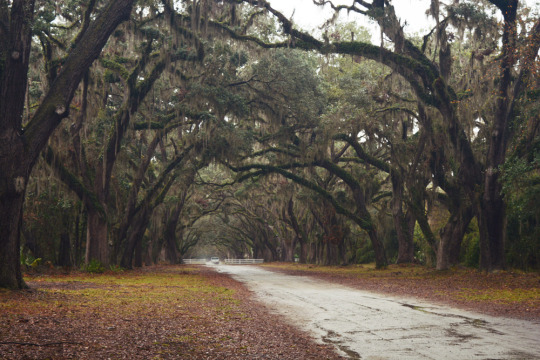
I’ve always been drawn to the Southern Gothic Horror Genre, with anything from Flannery O’Connor’s Short Stories, to William Faulkner’s Sanctuary, and Anne Rice’s Vampire Lestat Series. It’s a genre I want to dabble with for my next story idea, but am concerned that I won’t nail it right, as I am not from the South, let alone from the U.S. For those of you who do not know, Southern Gothic is a sub-genre of Gothic fiction in American literature that takes place in the American South, and includes deeply flawed, disturbing or eccentric characters who may be involved in hoodoo, decayed or derelict settings, grotesque situations, and other sinister events relating to or stemming from poverty, alienation, crime or violence. Southern Gothic writing is thus an extension of Gothic fiction, which originated in England in the 18th Century, and includes novels such as Horace Walpole’s The Castle of Otranto (1794), and Mary Shelley’s Frankenstein (1818). These novels all contained elements of horror, death and romance, often revolving around events that appear to be supernatural, but which ultimately have a natural explanation. Furthermore, the word ‘gothic’ can be taken as an historical reference to the Goths, the people responsible for the first known example of Germanic language during the 4th to the 6th Centuries AD. It denotes the Dark Ages, and the brutality, horror, and decadence associated with this period. It also refers to Medieval architecture; location is very much a character in itself in these novels, which often take place in castles, manors, and monasteries.
The popularity of Gothic fiction could also be seen across Europe: Germany’s Schauerroman (shudder novels) were much darker than their English counterparts, and stories such as Carl Friedrich Kahlert’s (writing as Ludwig Flammenberg) The Necromancer; or, The Tale of the Black Forest (1794) and Carl Grosse’s Der Genius (1796) contained a greater focus on necromancy and secret societies. European Gothic fiction was used by authors to delve deeply into their history, allowing its audience to experience the thrilling terrors of the dark past, which was naturally echoed in the American Southern Gothic tradition.
Elements of a Gothic treatment of the South were apparent as early as the 19th Century, in the grotesques of Henry Clay Lewis and the de-idealised visions of Mark Twain. However, the genre came together only in the 20th Century, when dark romanticism, Southern humour, and the new literary naturalism merged into a new and powerful form of social critique. The thematic material was the result of the culture existing in the South following the collapse of the Confederacy, which left a vacuum in both values and religion that became filled with poverty due to defeat in the Civil war and reconstruction, racism, excessive violence, and the theological divide that separated the country over the issue of slavery.

The Southern Gothic style employs macabre, ironic events to examine the values of the American South, thus, it uses the Gothic tools not just for the sake of suspense, but also to explore social issues and reveal the cultural character of the American South, with the Gothic elements often taking place in a magic realist context rather than a strictly fantastical one.
Warped rural communities replaced the sinister plantations of an earlier age, and in the works of leading figures such as William Faulkner, Carson McCullers and Flannery O’Connor, the representation of the South blossomed into an absurdist critique of modernity as a whole.There are many characteristics in Southern Gothic Literature that relate back to its parent genre of American Gothic and even to European Gothic. However, the setting of these works is distinctly Southern. Some of these characteristics are exploring madness, decay and despair, continuing pressures of the past upon the present, particularly with the lost ideals of a dispossessed Southern aristocracy and continued racial hostilities.
Southern Gothic particularly focuses on the South's history of slavery, racism, fear of the outside world, violence, a "fixation with the grotesque, and a tension between realistic and supernatural elements".Similar to the elements of the Gothic castle, Southern Gothic gives us the decay of the plantation in the post-Civil War South. Villains who disguise themselves as innocents or victims are often found in Southern Gothic Literature, especially stories by Flannery O'Connor, such as Good Country People and The Life You Save May Be Your Own, giving us a blurred line between victim and villain. Southern Gothic literature set out to expose the myth of old antebellum South, and its narrative of an idyllic past hidden by social, familial, and racial denials and suppressions
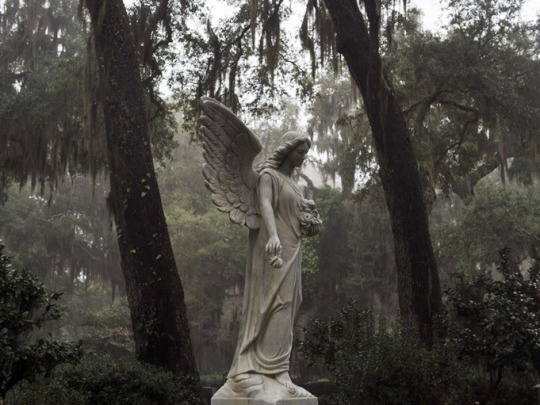
The term "Southern Gothic" was originally used as pejorative and dismissive. Ellen Glasgow used the term in this way when she referred to the writings of Erskine Caldwell and William Faulkner. She included the authors in what she called the "Southern Gothic School" in 1935, stating that their work was filled with "aimless violence" and "fantastic nightmares." This is a sentiment that has been expressed less and less, as it’s seminal authors, such as Flannery O’Connor, become lauded as being some of the most important icons in American literary history.
Of course, the genre also exists in film and television, with movies such as The Gift, and TV series like American Gothic and Season One of True Detective, the latter being one of the greatest TV shows of the last 10 years. The first series of True Detective, in addition to its Southern Gothic setting and characters, incorporates many of the core aspects of Gothic fiction, as well as drawing on the work of specific American horror authors, notably Lovecraft, Chambers and Ambrose Bierce. The setting is truly breathtaking and depressing in it’s dilapidation, and it’s clearly poverty-laden surroundings, as well as it’s troubled but fascinating key characters. Every time I watch the series, I imagine what it might have looked like if it was in the form of a written novel instead of a television series.
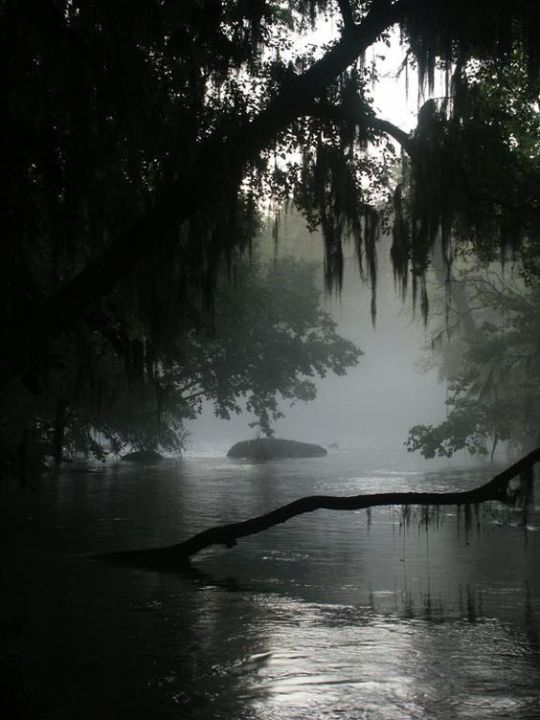
But I digress. As much as I love this genre, my personal experience of the American South is restricted to visiting Florida on holiday for three weeks when I was 10, so I think that I might steer clear of writing the next great American Gothic horror novel for the moment. Instead, I might focus on a writing project centring around European Gothic horror, as I lived in Norway for 6-and-a-half years. Norway, with its bitterly cold autumns and winters, and sweeping fjords and mountains creating great chasms between communities seems like an ideal setting for writing a good Gothic novel. I am even privy to the fact that Norway is home to an infamous, long-since abandoned mental asylum, which housed the criminally insane and where lobotomies and mysterious, unsolved deaths involving patients were commonplace. So, this will be the setting for my next novel, and my American-style Gothic horror story will have to wait. Stay tuned.
#novel writing#bayou stories#american gothic#european gothic#just write#gothic age#norway#livinginnorway#living in europe#leir#history lesson#history of the south#origins#novel ideas#flannery o'connor#william faulkner#mary shelley#the gift#true detective#carson mccullers#ludwig flammenberg#carl grosse#the necromancer#the castle of otranto#frankenstein#shudder novels#the dark ages#the dark ages history#goths#anne rice
20 notes
·
View notes
Text
Glen Coco’s Top 10 films of 2019

2019 was one of the better movie years I’ve experienced. It was no 2007 or 2013--we all know that--but it was pretty damn good. People who say ‘they just make crap nowadays’ probably aren’t really into movies and are definitely out to lunch. Dammit, now I want lunch. Anyway, here are my picks for the ten best films of 2019 which, as always, follow my runners-up and the traditional bonus track...There’s always a bonus track.
Runners-Up
-Bombshell
-Booksmart Full Review: https://thefilmsnob.tumblr.com/post/185427895290/booksmart-out-of-5
-Ford v Ferrari
-The Irishman
-Joker Full Review: https://thefilmsnob.tumblr.com/post/188571262775/joker-out-of-5
-Parasite
-The Peanut Butter Falcon
-The Two Popes
And here are my top 10!
#10b. (Bonus Track) Avengers: Endgame
Director: Anthony Russo, Joe Russo
Starring: Robert Downey Jr., Chris Evans, Scarlett Johansson, the rest of Hollywood
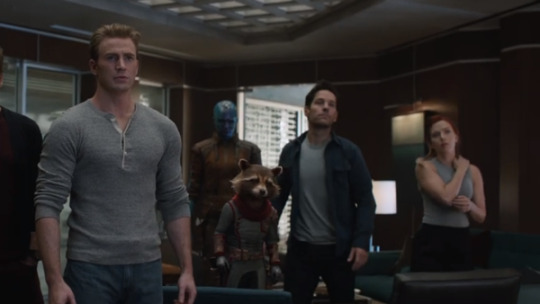
Maybe, like some people in the industry, you don’t consider Marvel films to be ‘cinema’. Well, that’s a legitimate and long debate for another time. But, you can’t say that weaving a narrative through 22 related films isn’t an impressive feat. That’s what Marvel Studios did and with the help of the Russo Brothers, and despite the countless moving pieces, they ended this chapter of the franchise almost perfectly with just the right balance of action, human drama, twists, turns and some surprisingly poignant moments. If you didn’t get goosebumps--and maybe even pee your pants a bit--when those portals opened up at the end, bringing to mind Gandolf’s triumphant entrance into the Battle of Helm’s Deep, then maybe movies just aren’t for you, my friend.
Full Review: https://thefilmsnob.tumblr.com/post/184694412545/avengers-endgame-out-of-5
#10. Marriage Story
Director: Noah Baumbach
Starring: Adam Driver, Scarlett Johansson
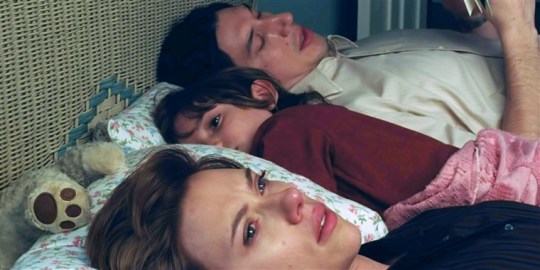
Ironically, Marriage Story is actually about a divorce. But, writer/director Noah Baumbach imbues this civil-turned-nasty separation with all the complexity and aggravation that come with being married with child. He treats the divorce like the grueling process you’d expect it to be, one which involves real, flawed people whose needs and desires don’t align, making the situation increasingly distressing for all parties involved. In turn, Driver and Johansson make this distress increasingly palpable for the audience until it feels like we’re in the room with them during one of their several heated arguments. Both actors give some of the best work of their careers, yet it still may be overshadowed by Laura Dern and Ray Liotta who shine as the two ruthless lawyers representing them. Baumbach has been churning out these gems for years, but his latest, which may be his most accessible, may also be his best so far.
#9. Jojo Rabbit
Director: Taika Waititi
Starring: Roman Griffin Davis, Thomasin McKenzie, Scarlett Johansson
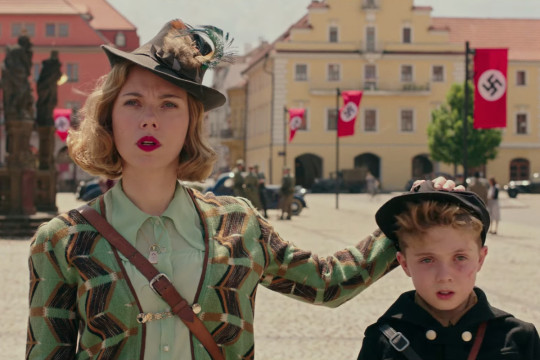
What do you get when you mix Nazi Germany, the ghost of Hitler and a poor Jewish girl trying to survive the second World War? You get one of the funniest and most touching movies of the year, of course. The surging writer/actor/director Taika Waititi, who specializes in quirky films filled with quirkier characters, hasn’t made the typically grim melodrama about Nazi Germany nor is he doing anything close to promoting Nazi culture. Instead, he uses the tale of a young boy who attends a Hitler Youth training camp to highlight the absurdity of this horrible movement while promoting tolerance. He delivers this powerful message by introducing a young Jewish girl who seeks refuge in the home of Jojo and his mother, played by Scarlett Johansson (who clearly had a good year). This leads to Jojo’s crisis of conscience which is complicated by his imaginary friend...who happens to be Adolf Hitler! Yes, the movie is different.
#8. Once Upon a Time...in Hollywood
Director: Quentin Tarantino
Starring: Leonardo DiCaprio, Brad Pitt, Margot Robbie
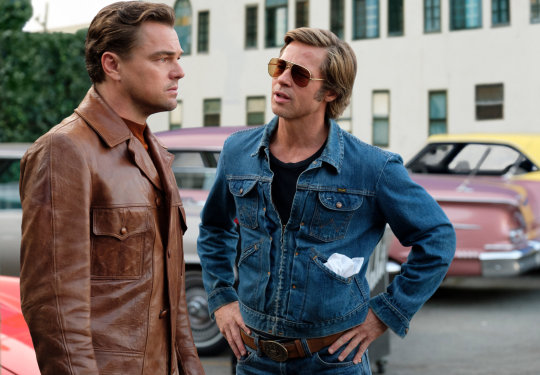
It’s no surprise that Quentin Tarantino would make a film about 1960s Hollywood starring one of the most prestigious celebrity trios in the business; the guy’s passion--obsession even--for film is unmatched. Here, he uses the medium to take a horrific moment in history like the murder of Sharon Tate at the hands of the Manson Family and gives it the stereotypical Hollywood happy ending. In doing so, he showcases the wish fulfillment of the movies and their power to comfort us with optimism while simultaneously warning of their ability to shelter us from our cruel reality. DiCaprio and Pitt give brilliant performances as characters who add to the perception-vs-reality theme, DiCaprio playing the huge movie star full of anxiety and doubt in real life who relies heavily on his stunt double, Pitt, who’s the actual confident hero. All this and much more takes place in a meticulously recreated Hollywood of the ‘60s that sweeps you up in nostalgia and immerses you in a world of make-believe.
#7. Knives Out
Director: Rian Johnson
Starring: Ana de Armas, Daniel Craig, Chris Evans, Jamie Lee Curtis, Christopher Plummer
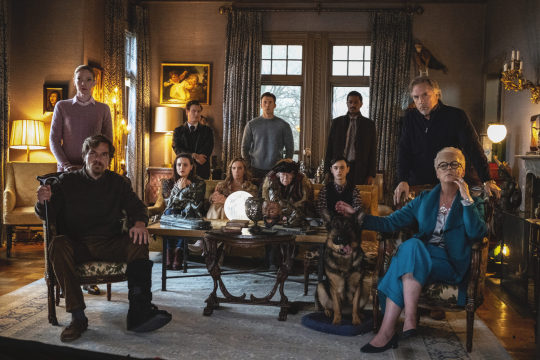
Yes, there have been many murder mysteries. No, Knives Out isn’t just like the rest of them. Writer/director Rian Johnson does a masterful job at crafting a labyrinthine story that’s just complex enough without overwhelming and strikes a perfect balance of suspense and comedy. Featuring one of the greatest casts assembled in 2019 playing a dysfunctional family of despicable yet intriguing individuals of means, the story is full of truly surprising twists and turns and, more crucially, some well-integrated and astute social commentary. This isn’t a two-hour lecture, though; the film is undeniably entertaining. The stand-out here is detective Benoit Blanc, played by Daniel Craig with a delightful southern drawl and an attention to detail that rivals Sherlock Holmes. Craig transcends his James Bond persona while the film itself transcends a genre.
#6. 1917
Director: Sam Mendes
Starring: George MacKay, Dean-Charles Chapman

If this were a few years ago 1917 would be, without question, my #1 pick. However, as the long, uncut tracking shot has become more common over the years, it’s also lost a bit of its luster; 2014′s Birdman, one of the best films of the decade, also had the appearance of a single take. Nonetheless, to make a war film, with all its tricky choreography and pyrotechnics, look like one long take is still a phenomenal achievement and an absolute marvel to behold. And, although it obviously couldn’t be filmed in one shot, Sam Mendes and master cinematographer Roger Deakins still had to shoot long takes and stitch them together digitally while stealthily hiding the seams. It all helps tell the story of two young soldiers tasked with traversing treacherous territory to warn a Battalion of British soldiers about an impending German ambush. We follow the pair in real time amidst a story of remarkable bravery, enhanced by the fact that we’re with them every step of the way, at once experiencing everything they do up close while being reminded of how removed we really are from the danger they face.
#5. Uncut Gems
Director: Benny Safdie, Josh Safdie
Starring: Adam Sandler, Kevin Garnett (hey, why not?), Julia Fox

There are several talented actors in Hollywood who’ve gained a bad reputation for poor career choices. Ben Affleck and Will Smith come to mind. Perhaps the king of this group is Adam Sandler. He’s excelled sporadically in movies like Punch-Drunk Love and The Meyerowitz Stories, but he gives a truly Oscar-worthy performance in this--ahem--gem. As Howard Ratner, he’s a gambling addict who runs a jewelry store in New York’s Diamond district when he gets his hands on a rare Ethiopian black opal which he hopes will help pay off his many debts. In fact, he owes so much to so many people that he struggles to keep track of it all and we cringe every time he does. The tension builds to an almost unbearable level as a host of dangerous men seek payment. If that’s not enough, he’s on the verge of a divorce as he continues seeing a mistress who’s also his employee while owing $100 000 to his own criminal brother-in-law. If you were stressed just reading that, try watching the movie...or being Howard himself. The Safdie brothers don’t let up either, filming it like a documentary to add to its realism and immediacy...as if it needed that extra boost.
#4. The Lighthouse
Director: Robert Eggers
Starring: Robert Pattinson, Willem Dafoe
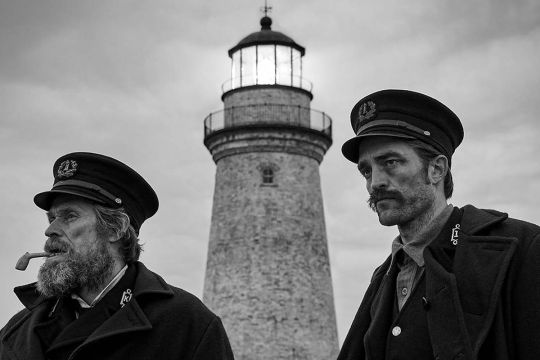
The first thing you notice watching The Lighthouse is that half the screen is missing; Robert Eggers, who also wrote and directed The Witch, shot the film with a 1.19: 1 aspect ratio, making the picture square, like an old-timey photograph. It feels limiting at first until you fully appreciate the feelings of confinement and anxiety it evokes. That’s important in a film about two lighthouse keepers, or wickies, who are forced to live together in insanely grungy and cramped quarters of a lighthouse on a remote island off the coast of New England. Considering the harsh conditions and the fact it’s a horror film, they soon clash and seemingly lose their grip on reality which manifests in macabre images and supernatural occurrences. Or does it? Ha! This is one of the most unique and beautifully filmed movies of the year with the grainy black and white 35mm making it seem like it was made closer to the late 19th century, when the film takes place. Like many recent horror films, this one relies more on mood and imagery than jump scares and is buttressed by only two actors who give award-worthy performances. Alright? So, go to hell; Pattinson can act.
#3. Little Women
Director: Greta Gerwig
Starring: Saoirse Ronan, Florence Pugh, Emma Watson, Timothee Chalamet, Eliza Scanlen, Laura Dern
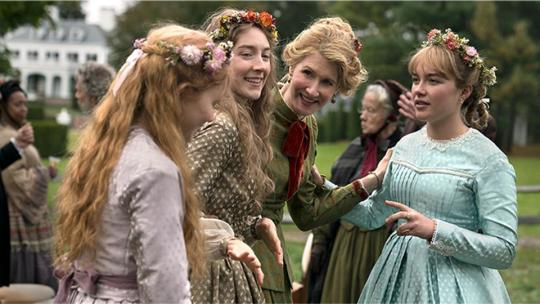
You might assume that Little Women is a stuffy period piece and even unnecessary considering it’s the seventh adaptation of Louisa May Alcott’s iconic 1868 novel, but the prodigious actor-turned-writer-turned-director Greta Gerwig is too adept in her craft to settle for conventional story-telling. She gives this classic story a fresh, modern take with a non-linear approach and a feminist angle that enhances without overwhelming. Like her work on Lady Bird, she keeps scenes brisk and to the point with decisive cuts. She also adds her unique wit and snappy dialogue. Every conversation, no matter how superficial, leaves you enraptured. So, too, do the characters; it’s a pleasure following these complex girls through the ups and downs of their lives as women of little means and even fewer rights. They’re portrayed by a stellar cast, particularly Jo March who’s played by Saoirse Ronan, perhaps our greatest sub-30 actress. This may be a little movie about little women, but the payoffs and sheer enjoyment are truly grand.
Full Review: https://thefilmsnob.tumblr.com/post/190231754125/little-women-12-out-of-5
#2. Us
Director: Jordan Peele
Starring: Lupita Nyong’o, Winston Duke
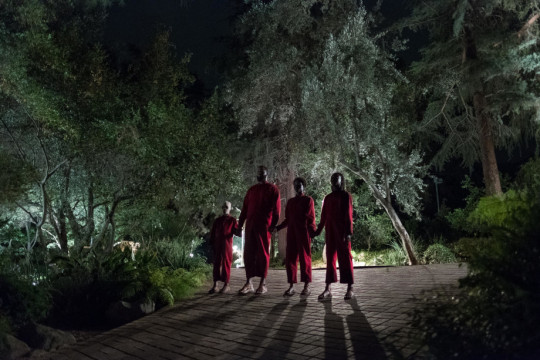
I know it’s blasphemous, but I might be the only person on Earth who not only thought Get Out was a tad overrated, but that Jordan Peele’s second feature, Us, is the superior picture. It’s easy to look at this film as merely a unique take on the slasher genre, but it’s so much more than that. Like any good horror, it’s creepy as hell, but it’s also brimming with foreshadowing, symbolism and metaphor. There are three or four ideas that Peele sets up at the beginning that seem disconnected to the story, yet they each have a specific purpose and when that becomes evident, it’s incredibly satisfying. Even more impressive is how Peele turns a movie about a vacationing family encountering their doppelgangers into a brilliant commentary on the current state of America, specifically in regards to class division and its relation to the Nature vs Nurture debate. And the movie’s neat twist at the end isn’t just added for shock value; it’s actually the final puzzle piece and essential in conveying the film’s message. I struggled with ranking Us at #1 or #2, but its over-reliance on slasher film action around the mid-point (a minor flaw) was the deciding factor. It’s near-perfect, nonetheless.
Full Film Interpretation: https://thefilmsnob.tumblr.com/post/184073868405/interpreting-jordan-peeles-film-us
#1. Midsommar
Director: Ari Aster
Starring: Florence Pugh, Jack Reynor, William Jackson Harper, Will Poulter
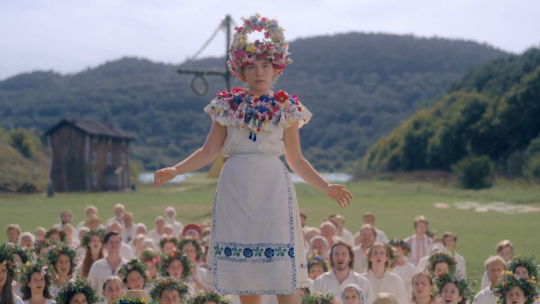
If there’s one thing for which the 2010s should be known, it’s great horror films, a refreshing development after decades of mediocrity. But, just like movies in general from the ‘New Hollywood’ ‘70s, horror films are more creative and ambitious than they’ve been in ages thanks to a handful of visionary filmmakers. Three out of the top five entries are horror movies and that’s saying something.
Midsommar is a mesmerizing horror film that hearkens back to the 1970s when the genre relied more heavily on atmosphere and pacing and sheer creepiness than on jump scares and gimmicks. It takes one hell of a talented writer/director to make a movie shot almost entirely in daylight feel so utterly sinister, but Ari Aster, who also made the acclaimed Hereditary, does just that with ease. What’s more, the film contains no monsters, nothing supernatural and an astonishingly minimal amount of violence, yet when we do see bits of blood and gore, it’s a complete shock to the system. What Aster does rely on is his mastery of lighting and framing to produce images that are unexpectedly eerie.
This is a movie that starts with a group of anthropology students looking to take part in a once-in-a-lifetime festival at a commune in the Swedish countryside and ends in an unspeakable nightmare. It’s a long and sometimes grueling experience that steadily snowballs into horror, but that slow burn is crucial for this delightfully nerve-wracking series of events. Oh, and it’s also a breakup story...possibly the scariest breakup story of all time. It’s certainly the best film of 2019.
6 notes
·
View notes
Video
youtube
Queer Movie Review
Seeing gay groups through Stranger by the Lake.
Stranger by the Lake (2013) is a French queer plot movie written and directed by Alain Guiraudie. The film premiered in the Un Certain Regard section at the 2013 Cannes Film Festiva. The film contains elements of eroticism, suspense, horror, plot, etc, which telling the protagonists’ love and sin on the lakeside. There is no soundtrack in the whole movie, only three venues, four main characters, showing a shocking story in a concise way.
*Synopsis.
A lake surrounded by a jungle in southern France is a sexual paradise for gay men. Every day, gay men come to the lakeside beach to sunbathe, swim, and find sexual partners. They often lie naked by the lake, talk to people around them and flirt, once they find the object of their choice, they will go to the lakeside jungle to make love.
Franck is one of them, here he met the intimate friend Henri, and the idealized lover Michel. At first he only talks to Henri, but deeply attracted by a handsome guy Michel who already has a sexual partner. One evening, men by the lake are basically gone, and he is also preparing to leave, but unexpectedly witnesses in the jungle the whole process of how Michel sinking and killing his sexual partner in the lake. With a restless mood, he comes here again the next day, and shows love to each other with Michel who returned to the single again. They admire each other’s bodies and makes love without restraint. Three days later, the corpse is salvaged from the lake, and a police detective intervenes in the investigation. In order to cover Michel, Frank concealed the truth in the interrogation of the police detective again and again.
Frank is struggling during the investigation, he loves Michel while is afraid of waiting for him to be murdered by Michel too. At the same time, Michel gradually realizes that Frank might know that he is the murderer. They suspects each other, but they do not separate and still have sex together by the lake. Until one evening, Frank is swimming in the lake, Henri comes to chat with Michel, suggesting that he knew Michel is the murderer.
When sawing the deserted lakeside beach, Frank hurried ashore, but seeing Michel cut Henri's throat in the jungle. He panics and fled, then meeting the police detective killing by Michel. The night fell, darkness and horror shrouds the jungle, and Michel, whose hands were covered with blood, calls Frank and promises not to hurt him. In the dark, Frank once again choses to believe the dangerous lover, uses shivering voice calling Michel’s name. Then, the film stops in the dark back of Frank…
*Abstract.
For me, Stranger by the Lake is an excellent movie work. I like its succinct narrative technique and ups and downs of the plot, and less is more aesthetic style.
As a heterosexual, I find resonance in this film that depicts same-sex relationships. I think it reflects the fear that may exist in my intimate relationship. At the same time, as a queer-themed film, it also provides me with an internal perspective to observe same-sex relationships. Next, I will analyze this film from the following aspects:
1. Sex and love in the same-sex community.
2. The marginality and isolation of homosexual culture.
3. The risk and security awareness of homosexual love.
4. The confrontation between desire and fear in same-sex
relationships.
5. Gay self-awareness and struggle for identity.
I will interpret the same-sex relationship and homosexual culture in the film from a heterosexual perspective. While reading the film, I can understand the gay community more deeply and understand myself better.
*1. Sex and love in the same-sex community.
After watching this movie, the first question that arises in my mind is whether there is real love in this lakeside community, or only the physical attraction.
According to the triangular theory of love, developed by Robert Sternberg, a member of the Psychology Department at Yale University, "the three components of love, according to the triangular theory, are an intimacy component, a passion component, and a decision/commitment component.” If there is love in this community, most of the love belongs to these two kinds: infatuated love (only passion) and romantic love (only passion and intimacy, no commitment).
In the film, almost men come here just to find sexual partners to solve their physiological desires. As long as they are satisfied with each other's appearance and body, they can make love together and enjoy the sex. They sorely seek sexual pleasure, and in some shots, there are even scenes where many people make love together. Most of the time, they are making love as strangers, regardless of their name, occupation, age and background. It is unnecessary for them to know these information, which reflects that they have no long-term expectations and commitment to such sexual relationships. It can be described as infatuated love (only passion).
In some cases, a pair of sexual partners who are highly satisfied with each other will form a more stable relationship, and only have sex with a “him”. However this partnership is still loose because they lack social connections beyond the lakeside community and they will continue to look for a better sexual partner. Their relationship is relatively intimate but not binding. It is a kind of romantic love (only passion and intimacy, no commitment). In my understanding, the love between Frank and Michel is the romantic love.
All in all, the lakeside gay community described in Stranger by the Lake is a more deformed community without Consummate love (passion, intimacy, and commitment).
*2. The marginality and isolation of the homosexual culture.
The lakeside community in the film is an isolated gay sex paradise. First, the location of this lakeside community is very remote and concealed. The calm lake and the lakeside beach are surrounded by thick jungles, and only gay men gather here.They are often naked here and even expose sexual organs, and do not evade others when making love. Second, Michelle’s lover was discovered till three days after his death, which also proved that the place was inaccessible. Third, There are only three venues in the entire film, lakeside, jungle and parking lot. This also implies the isolation of this community.
This environmental setting highlights the isolation of this gay community and their internal culture. This is an epitome of LGBTQ group in the mainstream culture in contemporary society. In reality, the LGBTQ community also faces the dilemma of being marginalized and isolated. On the one hand, they are excluded by mainstream culture. On the other hand, heterosexuals are less interested in truly understanding and accepting their culture.The location of the lakeside community away from the ordinary community is just like the position of the LGBTQ group culture in the mainstream culture.
*3. The risk and security awareness of homosexual love.
In the jungle where gay men make love, condom packaging, used condoms, and paper towels with semen are everywhere. Most people even have no security awareness of sexually transmitted diseases such as HIV/ AIDS when making love with strangers. The protagonist Frank is a good example. When Frank and his first sexual partner are lingering and preparing for his oral sex, the sexual partner stops him, saying that his condom has run out and asks Frank if he had a condom. Frank looks surprising and says he trusts him and never Using a condom. Throughout the film, Frank has direct or indirect sexual relationships with three different guys without any protective measures.
Disorganized and mess sexual environment, lacking of sexually transmitted infection awareness, unprotected sexual behavior, frequent replacement of sexual partners, all of these factors put the gays in the lakeside community at high risk.
In reality, homosexual groups do have such problems, which also leads to more solid social prejudice: promiscuity makes AIDS very common among homosexuals, who are at high risk of sexually transmitted diseases.
*4.The confrontation between desire and fear in same-sex relationships.
In the film, Frank, who has witnessed Michel killing his former lover, known Michelle is a dangerous criminal from the beginning, but driven by lust, he is still unable to extricate himself from Michel’s love. Even lying to the police detective to cover Michel’s crimes. However, he basically does not understand Michel, his love is based on the shape of Michel's sculpture. Between strong desires and fears, Frank succumbs to his desires again and again. Finally, even after knowing that Michel killed three people, he still chose to believe the cold blood killer.
The choice of Frank in the movie also maps the LGBTQ group in an implicit way. Many homosexuals have to face multiple pressures from family and society if they want to come out, and they have difficulty finding a suitable and stable sexual partner. Their sexual behavior is full of high risks and their love is difficult to be accepted by society. But there are still brave people who choose their desires between fear and desire, would rather be threatened to choose love.
*5. Gay self-awareness and struggle for identity.
In the film, most characters have a low sense of their own homosexual identity. Frank's friend Henri is a man who has married a woman and have sexual experience with men. He is not completely accepting his sexual orientation and is confused. When he has heard that Frank had only sex with men, was not married, and admitted that himself was gay, Henri is surprised to say that the gay men all he know were married to women. For Michel, as Frank's lover, he repeatedly told Frank that he didn't want to meet outside the lakeside community. In addition, he hopes to hide the fact that he is here to make love with guys.
In today's society, in the face of public opinion and pressure, most LGBTQ members will make choices like Henri and Michel, find a heterosexual marriage, and conceal their gay identity.
*Conclusion.
All in all, Stranger by the Lake (2013) is a is a succinct and profound film that shows the complexities within the gay culture through a description of a particular gay community and a dangerous same-sex relationship.
Reference:
"2013 Official Selection". Cannes Film Festival. 6 May 2013. Retrieved 30 Oct. 2019.
Sternberg, Robert J. (2007). "Triangulating Love". In Oord, T. J. (ed.). The Altruism Reader: Selections from Writings on Love, Religion, and Science. West Conshohocken, PA: Templeton Foundation. p. 332. ISBN 9781599471273.
StoryCorps (2019). “Lessons in Love.” [podcast; listen to whole episode ~13min].
Treichler (1999) AIDS, Homophobia, and Biomedical Discourse.
Bernshoff & Griffin (2004) Queer Cinema.
2 notes
·
View notes
Text
Baby Driver: The Aspects of Music and its Rush

Music is a machine that moves the world in all aspects, and this can be in real life with day to day tasks or as we see in films like Baby Driver. The plot of the movie alone is moved by what songs Baby chooses to listen to during crucial scenes of the movie. Edgar Wright wrote and directed this movie, which he “earned rave reviews from critics and general audiences alike for the unique way it synchronized the action unfolding on the screen with its excellent soundtrack boasting music from multiple decades.” (Marshall). Wright worked with Julian Slater to create the masterpiece of a musical action film. Wright created this story with the idea that had always been associated with the song, “Bellbottoms” and he states in interviews like with Pitchfork that, “It was as close to synesthesia as I’ll probably ever come: ‘When I listen to this song, I think of a car chase—what is the movie that goes with this vision?’”. How could he not create a movie based on that vision or start the movie with that exact song?
Baby in the movie is seen as the main character, but some could say that the music is also the main character because it was worked in a way that no other movies have done. Slater states that “every song in the film was what we call “tempo-mapped,” where you map out the tempo to any given point in the music.” (Marshall). We see this tempo-mapped aspect during the movie when we can place ourselves in Baby’s head during scenes, the sound effects and beat of the music cause us to feel the adrenaline and this is all thanks to Slater’s design of music. Another prominent character that should be mentioned in the iPods that Baby uses, those are the backbone of his role and what gets him through the days. We learn that iPods are essential to him from a flashback that he has of his parents just before their deathly crash and why they are crucial for him to get through his days. He has tinnitus, so by playing his music, he can block out the buzz/ringing that is always playing in him. The tinnitus to me can not only be seen as the soundtrack of his life, but also the reminder of grief for his parents.
The music is the stability of his work, and anything that messes with that stability can lead Baby into distress. You can see these examples of how the music runs his life, like in the scenes of him just getting coffee where a regular day to day activity for most people turns into a musical for his life. We can make references to the flashbacks of his life that he uses the music the same way that his mom did; they both hide from the bad in their lives by incorporating the music. His mom put the bad into her songs the same way Baby does with the recordings he makes of his life. He carries a tape recorder around recording the conversations and crimes that he is apart of, Tom Beasley states that Baby does this because “the only way he can parse the world’s evil and confusion...uses his own compositions to turn criminality into rhythmic ridiculousness.” This is all how he keeps the stability going even in the mess of the crimes that he gets involved with.

Wright talks in multiple interviews about how he came to choose the songs and make them work for the movie. A lot of the time, he wanted songs that had an interesting take to them like the change in beats, tempo, and fading from loud to quiet. He worked with his DJ friend, Mark Nicholson, to add the new sound effects to the songs that would also help enhance what Slater and his team would also be doing. He states that the two of them worked at figuring out how to incorporate gunshots into songs like “Tequila” so that there was some animation when you heard all the sounds coming together. In Marshall’s interview, we also hear Slater adding the facts of how the sounds of each car chase scene are different depending on how the situation is going. This can be heard through the ways that you understand the car changing gears and connecting to the rest of the music in the background. All of these factors really make it feel like a symphony working to move the movie.
Slater gave examples of how he worked the music and sound effects to match the scene and create that animation. For the car chase scenes, he made sure that you could hear the satisfying gear changing noises as Baby speed off on the perfect pursuit like at the beginning of the movie. But if the chase wasn’t excellent and things were going badly, the effects and sounds would give you warnings for what could be coming up, just like how suspenseful music acts in horror movies. Another way that Wright and Slater were able to add suspense in the film without relying on music was to have us the audience hear Baby’s tinnitus even if it was very subtle. Slater says that depending on what stress or what Baby was going through without music, you could listen to different versions of the tinnitus (Marshall).

We see throughout the movie Baby hiding in the music, especially when he’s with the teams at crime sprees. Still, we see a change where he is no longer hiding; instead, he finds himself comfortable with Debora, who he bonds with trough music. Debora, like Baby and his mom, also finds herself hiding through music to get through the workdays. This bond the two have are what brings Baby to realize new stability has been found that doesn’t just rely on music, but also on love, the two things that Baby hasn’t fully had since his mother passed away. Baby sees that the temporary feelings of rush and hiding from the grief that he gets from the crime sprees don’t have to be the norm in his life. This new life he envisions with Debora and their love of music can be what saves him if he leaves the life he has known for too long.

The only time we see music turn against Baby is when Buddy is seeking revenge against Baby at the end of the film. Buddy uses Baby’s favorite song “Brighton Rock” as the chase song when he wants to kill and destroy the fantasy world that Baby is trying to escape to. According to Beasley, Buddy is doing all of this because of the envy he has towards the fact that Baby still can live his dream life while he has lost all chances of being able to experience that again. Buddy was the only one that truly knew how to hurt Baby, and this was by ruining music, threatening Debora, and causing his tinnitus to cause more pain. He’s lost all chances of being happy and doesn’t want Baby ever to experience it because he’s lost all the good in his life.

Music and sound effects make movies become the stories that the writer has dreamed about. They are essential for us viewers because it allows us to be sucked into the plot and feel like we are also in the scene. From the symphony of sounds and music working together in this film, you can’t help to be sucked into it the characters and feel the rush of adrenaline with all the action happening. Wright and Slater did a fantastic job of combining all the aspects of music and sound effects to create imagery within the scenes and having multiple layers that you can only really catch after seeing the film numerous times.
References:
Beasley, Tom. “Analysis – Edgar Wright, Baby Driver and the Use of Music to Create
Escapist Fantasy.” The Popcorn Muncher, 16 July 2017,
http://www.thepopcornmuncher.com/2017/07/16/analysis-baby-driver-music-escapist-fantasy
Marshall, Rick. “How 'Baby Driver' Took Movie Soundtracks To An Entirely New Level.”
Digital Trends, Digital Trends, 22 Dec. 2017,
https://www.digitaltrends.com/movies/baby-driver-music-sound-effects/.
Minsker, Evan. “Behind the Music of Baby Driver, With Director Edgar Wright.” Pitchfork,
Pitchfork, 5 July 2017,
https://pitchfork.com/thepitch/behind-the-music-of-baby-driver-with-director-edgar-w
right/#.
1 note
·
View note
Text
Types of Novels

According to David Lewis, a neuropsychologist, reading is a powerful tool that relieves stress. Materials that can be read include newspapers, letters, and articles, and also include the novel. It is a fictional prose narrative of considerable length, and features a plot that unfolds through the actions, dialogue, and thoughts of the characters. The novel can be classified into different types. One such classification is the historical novel. History is the study of past events. Therefore, this type of novel focuses on recreating past events (real or imagined) through the characters and setting. It provides an avenue for readers to be empathetic toward the people who lived in a certain period. In essence, the historical novel embraces works that convey the entirety of life in a certain time and place. 1776, by David McCullagh, is an example of a historical novel because it traces the evolution of the United States of America. The epistolary novel is written as a series of documents. Although these novels commonly appear in the form of letters, others such as diary entries and newspapers exist. Dracula, by Bram Stoker, is a classic example of an epistolary novel because it is written in the form of diary entries, letters, and newspaper articles. An autobiographical novel contains the elements of autobiography and fiction. An autobiography is an account of a person’s life written by that person. Therefore, the novel seeks to uncover information about the life of the author through the experiences of the character. Great Expectations, by Charles Dickens, is a well-known example of an autobiographical novel. The supernatural is a concept that has caused dissent among philosophers, with arguments from various angles regarding its realism emerging. Regardless, the Gothic novel contains elements of the supernatural. It is a literary representation of the horror genre. The setting of a Gothic novel is usually an ancient castle or haunted house. A unique feature of this kind of novel is the level of suspense it contains. Suspense is an important aspect in drama, and in this novel form it keeps the attention of the audience under lock and key. The Castle of Otranto, by Horace Walpole, is a good example of the Gothic novel. A picaresque novel is filled with adventures because the roguish and criminal exploits of a character known as a picaro are examined. This type of novel contains an episodic plot and is set in contemporary societies. Picaresque works aim to entertain the readers with incredible events in the life of the picaro. Daniel Defoe’s Moll Flanders is an example of a picaresque work of fiction. Bildungsroman focuses on the journey of the main character from childhood to a state of maturity. A search for meaning is one of the factors that spurs the protagonist onto a path of spiritual education. Jane Eyre by Charlotte Bronte is a bildungsroman. While studying the different types of the novel, it is important to note that in many works some of these forms overlap. For instance, Dracula is a Gothic novel as well as an epistolary novel.
0 notes
Text
IAC Reviews #015: R.S.V.P (2002)
Well, I suppose it’s safe to say that leaving the city isn’t going to do us much good with avoiding trouble. I guess if you can’t beat ‘em, join ‘em I suppose. I heard there’s a crazy party going on and we’re invited to join in on the fun. Let’s see what they’re up to and if it’s worth it. Just be sure to practice your social distancing and keep your masks on, and I’m sure we’ll be just fine.
_______________________________________
For this, we’re going to go back a-ways to the mid 2000s when FearNet was still around and if you were like me, you’d find yourself turning to it for a quick fix of the flavor of the week - which was typically lesser known or underrated slasher films or B to Z-grade horror films; like that from Troma. It was around here that I’d soak up what I could on long, boring summer nights and I was usually in for something halfway decent if I not only never heard of it before, but it appeared that a lot of people on IMDb didn’t either judging from the sparse reviews and next to no posts on the message boards. Along with today’s feature, this would include others like The Curve (1998), Cherry Falls (2000), My Little Eye (2002), Taboo (2002), Zombie Nation (2004), and S&Man (2006).
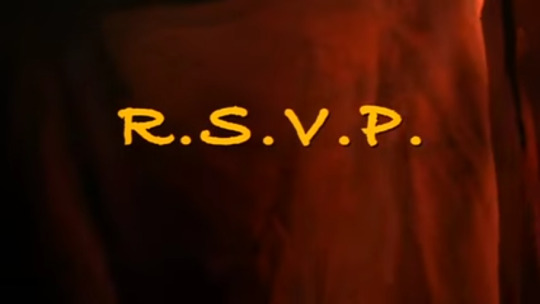
R.S.V.P is a 2002 dark comedy / suspense film, depending on who you ask, written and directed by Mark Anthony Galluzzo, who didn’t go on to do a whole lot in his career. Our story centers on a psychology student, Nick, with a obsession with true crime who invites his old friends and professor over for a fun night at his apartment where the only party game they’ll be playing is murder. It stars some familiar faces, like that of Jason Mewes, Reno Wilson, Rick Otto, Jonathan Banks, and the late Glenn Quinn. If you have a weakness for slasher oriented films from 90s to the early 2000s, then you might already be on board from the trailer alone; both with it’s general concept and how, even in 2002, the 90s are still carrying on in spirit. It’s almost nostalgic in a way, conjuring up memories at the movie theater with the black light carpeting, the smell of overpriced buttered popcorn, and the deafening THX logo opener. But, the question now is if that sweet nostalgia comes with a bitter aftertaste that’s hard to swallow.
R.S.V.P In One Gif:

Okay, so maybe this is going to be a bit harsh given what I have to say next. But, bear with me for a moment.
________________________________________
Watching RSVP is a lot like sinking in lava. You think you’d abruptly catch on fire, but instead you sink slowly as you burn up due to the density of it. After all, we’re talking about molten rock here. This is the definition of a slow burner film if I’ve ever seen one and I know for some, that’s a hard pitch to sell because it can feel like scenes drag on and on for too long. I’ve griped about this in the past with films like Las Vegas Bloodbath (1989) with all the filler content and how the third act is like pulling teeth to blow through because it feels like nothing is happening. Well, in this case nothing of importance is happening.
So, what’s the deal with this then? The bulk of the film surrounds our protagonist, well antihero is probably a better title for him, Nick and his obsession with serial killers as a psychology student and how one would orchestrate the perfect crime. This discussion and obsession comes to ahead with two others early on; his professor Hal Evans and friend Jimmy, alongside a reoccurring theme of referencing and discussing true crime - with the 1924 Leopold and Loeb case being a subject of interest for Nick specifically due to the nature and legacy of the murder. Oh, and holy hell does this movie show how much it aged since the film was likely in production just as Gary Ridgeway was identified as the Green River Killer.
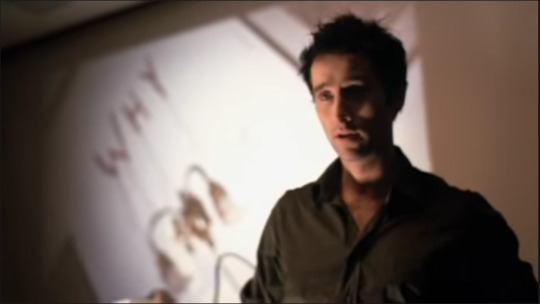
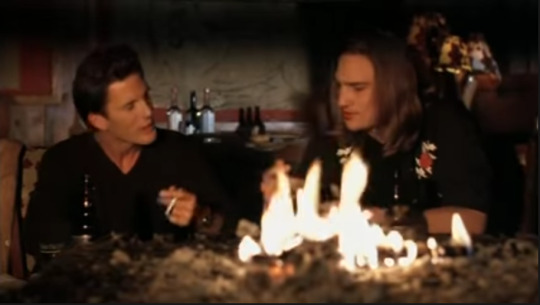
From here, we get a taste of who we’ll be stuck with for the next 90 minutes and I can’t say for sure if this is a party I’d stick around for, as it becomes almost another drunk/stoner college kid flick. I won’t say a ton about who is who and their relationships to each other to avoid straying too far into spoiler territory because just about all of it is strung together by foreshadowing. While there’s no surprise who our killer is, the suspense and mystery comes in the form of the motivation and when or if Nick will get caught while on his killing spree. The film has been compared to Hitchcock’s style of suspense in a few ways, and it reminds me of an example he made about suspense vs surprise with a bomb under a table;
“...In the first case we have given the public fifteen seconds of surprise at the moment of the explosion. In the second we have provided them with fifteen minutes of suspense. The conclusion is that whenever possible the public must be informed. Except when the surprise is a twist, that is, when the unexpected ending is, in itself, the highlight of the story.“
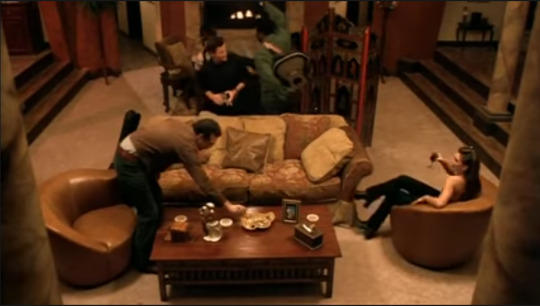
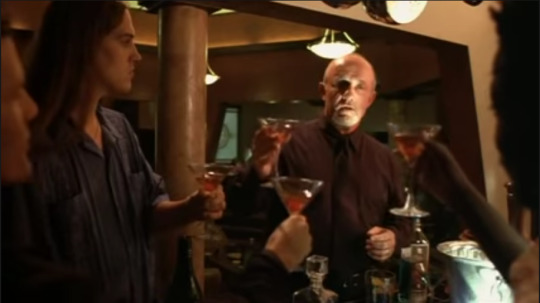

Unfortunately from here on out, there doesn’t feel like a whole lot to comment on beyond some minor exposition that links everyone together; such as three of the friends being in a band and there being some tension between some bitter ex-lovers. It’s more so just scene after scene of things happening and it feels like a drag, even if the metaphorical bomb is lurking just around the corner, which can have you just barely holding out for what the next murder will be and even then it’s hard to say if it was well worth the wait. The acting is a somewhat mixed bag and many of the characters are forgettable. It’s not the absolute worst I’ve ever seen, but not many of them did much to hold my interest enough to care if they lived or died.
Also, did I mention how strange the music choice is? We have moments where we have 90s electronic style beats, and then we cut to what I think is “Habanera” from Carmen and “Dance of the Sugar Plum Fairy” from The Nutcracker. I don’t get it. It’s kind of weird and a bit goofy if I’m being honest for the general tone it’s going for - unless that just plays into the dark, satirical comedy aspect. Speaking of which, some moments (especially the murders) are like a fine grilled ham and cheese sandwich with the payoff that I’m sure Patrick Bateman himself would recognize.


If I had to give one decent thing to say about it, it’s that the final act is probably the film’s strongest suit since the first ten minutes with our final chase and a further look into Nick’s psychology with understanding his methods of madness. I will say that while doing some research on this, I came across information about an alternate version of the film where we learn that Nick wasn’t the only person with blood on his hands. However, these scenes were removed due to confusing test audiences, but they can be found on the DVD. According to IMDb, this given more significance in a scene that plays during the credits, but I’m sure you could fit those pieces together on your own with how the final act plays out as a whole. But, I will say I wonder what I’m missing out on and if it parallels the Leopold and Loeb case; especially with how certain film adaptations were a bit heavy handed with focusing on LGBTQ themes, and given what we see unfold, it did pique my interest a bit.
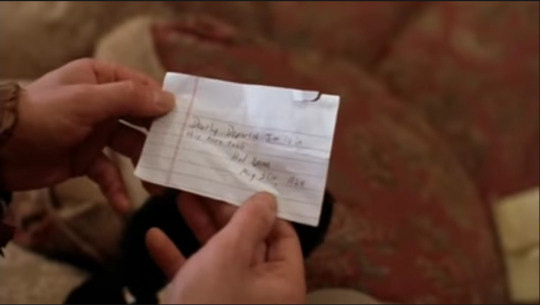
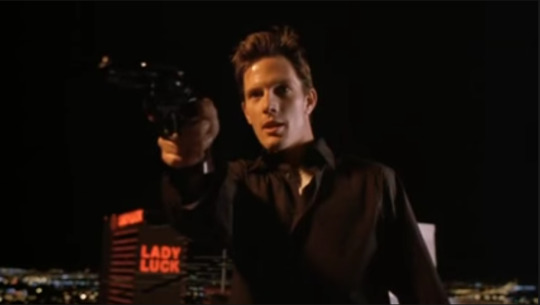
________________________________________
So, now we’re here. The party is over and the dead are waiting to be picked up. Where do I stand on this one? I recall when I saw this years ago that I didn’t exactly care for it and I rated it 3/10. I thought the characters were bland and uninteresting, it was too hammy for my general liking for being classified as a dark comedy, and I didn’t really care for the pay off. It was a major blur, and I suppose that’s telling to how invested I was in it. But, now we’re here close to 15 years later and something had to change, right?
Well, sort of. I guess it’s just more so telling that my own niche hobbies and interests are bleeding into things and why I have a guilty enjoyment for things like The Curve (1998) and the August Underground trilogy (2001-2007) and it’s focus on true crime, murder, and the concept of the true perfect crime. It was neat to look back on, even if it was just brief glimpses of the criminal psychology discussions. I still don’t particularly care too much for most of the characters, mostly the members of Whiskey Dick. The kills themselves are okay when they’re done well, but a good portion of them are cut to white so you miss all the action. The film is relatively bloodless as well, which is something I felt let down by, as the goriest scene happens in the opening and it’s downhill from there for the most part as far as that’s concerned.
Overall, this is just meh to me. I wouldn’t call it atrocious, but it’s not good either, not even by Saturday night popcorn flick standards. It’s a okay watch if you’re bored and don’t have much else going on, just don’t expect anything worthwhile even for the times. There’s better films from the era out there, but there’s also worse...so much worse.
RATING: 4/10
#iac reviews#rsvp#rsvp 2002#film#horror#comedy#dark comedy#horror comedy#slasher#1990s horror#1990's horror#2000s horror#2000's horror#90s horror#90's horror#00's horror#00s horror#obscure horror#horror movie#horror movies#horror film#horror review#glenn quinn#rick otto#jason mewes
0 notes
Text
10 Best Thriller Movies of All Time You Must Watch
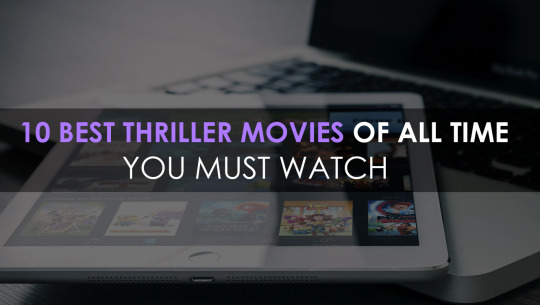
10 Best Thriller Movies of All Time You Must Watch
Thriller, Suspense, Plot Twists, Drama. These are all the genres that people love the most. There are a lot of movies released with these genres. You might've seen any of these movies. But, not all of them. Movie lovers mostly love thrillers and suspense movies. It's because those movies create curiosity and make people stick to the screen. You never get bored when you're watching the best thriller movies. You feel like your heartbeat running rapidly. Especially, some ultimate climaxes make you feel tense and worry. However, everyone likes movies with a good story with good narration. If it isn't made perfectly. Then, it wouldn't make people excited and they will be disappointed. There are only a few movies that have done perfectly with brilliant stories with amazing narration. So, we've listed 10 Thriller movies you must watch if you haven't seen it.
Memento
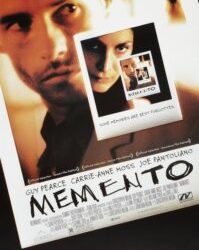
( IMG credit : google ) Memento was released in 2000. But still, it is one of the best thriller movies of all time. Memento movie is a non-linear narrative with a fantastic screenplay. Initially, you won't know what exactly is happening then you'll realize and understand how a screenplay is working. It is one of the best Christopher Nolan's works you should watch. At the end of the film, you will be blown away and amazed by the climax. It is also one of the greatest movie endings of all time. If you haven't watched this film. Watch this film right away. IMDb Rating: 8.4/10 Cast: Guy Pearce, Carrie-Anne Moss, Joe Pantoliano, and more. Plot: A person with short-term memory investigates his wife's murderer. WATCH NOW
Parasite
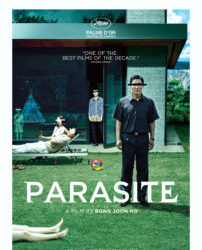
( IMG credit : google ) Parasite is oscar winner of the best picture in 2019. It is not only a thriller movie. But, a movie with a social message, drama, and suspense. From the beginning to the ending. I assure you, you will stick to the screen till the movie ends. The movie depicts the dark aspects of society and tells the great message which makes you think for some time. Boon Joon-ho, director of Parasite, also the winner of the best director, represents the story with amazing hidden metaphors. He makes you think after you watched the film. You may want to watch it again. IMDb Rating: 8.6/10 Cast: Kang-ho Song, Sun-Kyun Lee, Yeo-Jeong Jo and more. Plot: A poor family ( The Kims ) inhabits rich family's ( The parks ) house with deception. But, their easy life in the house becomes a threat and faces a lot of risks. WATCH NOW
Seven
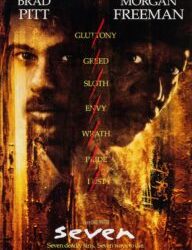
( IMG credit : google ) Seven is a crime drama thriller which blows your mind at the ending. The film starts with a normal narration and turns out to an extraordinary ending. David Fincher, who directed the best-known film zodiac and fight club is director of this film. If you have seen his films, then you should watch this film too with Brad Pitt and Morgan Freeman's brilliant performances. The film has a dark ending which you'll never expect and it is also one of the great movie endings. IMDb Rating: 8.6/10 Cast: Morgan Freeman, Brad Pitt, Kevin Spacey, and more. Plot: Veteran and Rookie, two detectives tracks down the murders who uses seven deadly sins as his motive.
WATCH NOW
Shutter Island
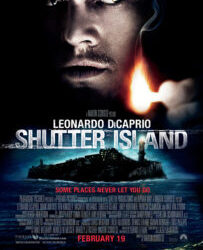
( IMG credit : google ) Shutter Island is one of the best thriller suspense movies of all time. The great thing about this film is the Climax. You will be blown and astonished after it is revealed. It is directed by legendary director, Martin Scorsese who made films like Goodfellas, The Wolf of the wall street, and Taxi Driver. Martin has a lot of fan base. Shutter island is all about a mystery that reveals in the ending. I think 99% never predicts the climax. Leonardo Dicaprio and Mark Ruffalo made brilliant performances in this film. Watch this film right now if you're martin or Leonardo movie lover. You will enjoy it. IMDb Rating: 8.1/10 Cast: Leonardo DiCaprio, Emily Mortimer, Mark Ruffalo, and more.. Plot: In 1954, U.S Marshal and his partner track downs criminal who is escaped from the psychiatric hospital.
WATCH NOW
Old Boy
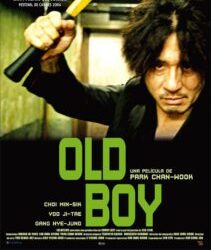
( IMG credit : google ) OldBoy is one of the greatest Korean films you should watch. The film is characterized by revenge, raw emotion and violence. The storyline, screenplay, cinematography, and acting are the major assets of this film. Chan-wook Park, the director made this film masterpiece by giving attention to every detail. The Plot twists and Storyline are brilliant elements that will excite you. Watch this movie, if you love Korean dramas. IMDb Rating: 8.4/10 Cast: Min-Sik Choi, Ji-Tae Yoo, Hye-Jeong Kang and more. Plot: Oh Dae-Su who is released after being imprisoned for 15 years finds his captor for vengeance. WATCH NOW
Fight Club
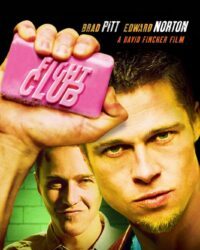
( IMG credit : google ) Fight Club was released in 1999. It is adapted from a book by Chuck Palahniuk. The Film explores through interesting elements of consumerism, class warfare, multiple-personality disorder, male bonding, terrorism, and anarchy. It is also one of the greatest thrillers of all time which was directed by David Fincher. The film is greatly acclaimed for its visual production, cinematography, screenplay, theme, and performance made by Brad Pitt and Edward Norton. IMDb Rating: 8.8/10 Cast: Brad Pitt, Edward Norton, Meat Loaf, and more. Plot: An insomniac office worker and a soap salesmen form an underground fight club. WATCH NOW
The Silence of the Lambs
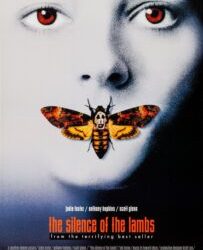
( IMG credit : google ) The Silence of the Lambs was released in 1991. It is one of the best horror-thriller movies you shouldn't miss. This film has a separate fan base and many people like to consider Classic. The film received accolades for Best Picture, Best Actor, Best Actress, Best Director, and Best Adapted Screenplay which makes you watch it eagerly. It gives you a classic cinematic experience that you haven't seen before. Watch this if you love horror-thriller films. IMDb Rating: 8.6/10 Cast: Jodie Foster, Anthony Hopkins, Lawrence A. Bonney and more. Plot: A young F.B.I. agent must receive the advice of an imprisoned killer to catch another serial killer, who skins his women victims. WATCH NOW
The Usual Suspects
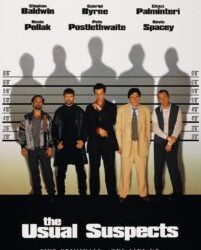
( IMG credit : google ) The Usual Suspects was released in 1995. Still, it is one of the greatest thriller movies of all time. The films start at a slow pace in developing and then, it turns out to a great ending which makes you astonishing. Many people claim it is one of the greatest cinema endings of all time. You may not understand the film in the first watch. You may need to watch the second time to comprehend the full story of the film. I'm sure you'll blow by the twist at the ending. The film has greatly acclaimed for performances of actors, narration and storyline. IMDb Rating: 8.5/10 Cast: Kevin Spacey, Gabriel Byrne, Chazz Palminteri, and more. Plot: Kint, the survivor of massacre tells interrogator complex events leading him to a horrific battle on a boat. WATCH NOW
Black Swan
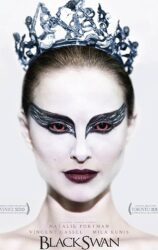
( IMG credit : google ) Black Swan is one of the best thriller movies that you have to watch. It's a psychological tragic thriller that may make you contemplate for some time. Natalie Portman made a brilliant performance in this film. The film also received accolades for Best Picture, Best Cinematography, Best Film Editing, Best Director, and won Best Actress. If you watch something dark and tragic. Watch this film right away. IMDb Rating: 8.0/10 Cast: Natalie Portman, Mila Kunis, Vincent Cassel, and more. Plot: After winning the lead role in Tchaikovsky's "Swan Lake" performance, a dedicated dancer struggles to preserve her mental stability. WATCH NOW
The Prestige
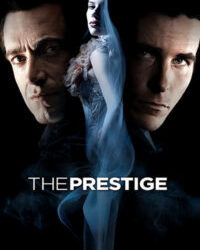
( IMG credit : google ) The Prestige is one of the greatest suspense thrillers of all time. Especially, the plot twists and performances are the major assets of this film. Especially, the twist at the ending blows you away. It is directed by Christopher Nolan ( master of non-linear narrative ) also throws a worth watching and brilliant screenplay to the film with extraordinary Huge Jackman and Christian Bale performances. The film is also considered to be one of the best under-rated films. If you're a Nolan fan, watch this film now. IMDb Rating: 8.5/10 Cast: Christian Bale, Hugh Jackman, Scarlett Johansson, and more. Plot: Two Rival Magicians outsmart each other by their performances after a dreadful incident. WATCH NOW Honorable Mentions: The Departed WATCH NOW Prisoners WATCH NOW ZodiacWATCH NOW The Sixth SenseWATCH NOW Although, these are the best thriller you can watch and enjoy. Let me know what's your opinion and your favorite movie. You can drop down your suggestions if you would like to. if you haven’t watched some best 2019 films and want to finish them. Check out : 10 Best Movies in 2019 that You Must Watch If You Haven’t Seen If you're looking for Netflix series : 10 Best Netflix Series of All Time If you love the genre of action and adventures : 5 Best Action Movies and Franchises of All Time You Must Watch I think this is the perfect time for you to start MARVEL CINEMATIC UNIVERSE : MCU Timeline – Watch Every Marvel Movie in Order You might be interested in these articles, Have a look at them. 16 Most Anticipated Movies in 2020 Best Hollywood Movies of 2019 that You Must See! MARVEL PHASE 5 MOVIES AND SHOWS LIST HUGE MARVEL PHASE 5 LEAK – MCU Read the full article
#bestdrama#bestfilmsinenglish#bestfilmsinhollywood#bestmoviesinhollywood#bestmysterythrillermovies2019#bestpsychologicalmovies#bestpsychologicalthrillermovies#bestpsychologicalthrillers#bestsuspensethrillermovies#bestthrillermovies#bestthrillermovies2016#bestthrillermovies2018#bestthrillermovies2019#bestthrillermoviesofalltime#bestthrillermoviesofalltimebollywood#bestthrillermoviesonnetflix#bestthrillers#bestthrillersofalltime#crimebestthrillermovies#crimebestthrillermoviesofalltime#englishthrillermovies#listofthrillerfilms#mysterymovies2019#psychologicalthrillerbestmysterymovies#psychologicalthrillerbestthrillermovies#psychologicalthrillerbestthrillermoviesofalltime#psychologicalthrillermysterymovies#psychologicalthrillers#suspensemysterythrillermovies#thrillerbestmoviesonnetflix
1 note
·
View note
Text
OKAY DEATH NOTE 2017 THOUGHTS
Under a cut for length not spoilers because honestly who fucking cares
-So the movie commits many sins but principle among them are two 1) The Death Note is basically just a vehicle for gore porn, pretty much indistinguishable functionally from any other 'Cursed Object' type horror movie. There's lip service paid to the suspense trappings of the original work but Wingard is clearly much more interested in the kind of brutal deaths that can be extracted from the Death Note's flexibility of options and far less in the moral quandaries that such an object would create, and Wingard's pre-release interview that expressed an interest in creating a Hard-R version of the story was at least for me a clear indicator that he was Wrong for the project, since grisly deaths are not what makes the story interesting, or in fact are even a priority. The fact that the default way the Death Note kills in the original canon is a heart attack (by all intents a fairly 'clean' method of death) is there for a reason, as is the 2017 version's curious decision to specifically omit that detail.
(In Wingard's interview he expresses a desire to include the "adult themes of anime" which specifically include "nudity, swearing, tons of violence" to him, which suggests that his familiarity with the medium starts and ends with Ninja Scroll and nothing else and that he probably didn't actually watch Death Note outside of a cliffs notes he had an intern scribble out or something)
2) And this is much more fundamentally antithetical to the original work, but Light's transition from Villain protagonist to Reluctant Misunderstood Anti-Hero.
in the original canon it's certainly possible to find Light's end goal aspirational, even if the actual empathy with Light himself doesn't last very long, and part of the paradox of the manga/anime is Light being a pointedly and unmistakably Terrible Person while also being a compellling and interesting protagonist. Even if you don't necessarily want Light to succeed, watching him operate and maneuver through various obstacles on the path to his goal is fascinating on its own terms.
Death Note 2017!Light, by contrast, is given great, excruciating measures to make him Highly Sympathetic to the audience, and indeed we are meant to interpret him specifically as a Good Kid Who Took A Wrong Turn and is now Way In Over His Head. His mom died at the hands of Joe Chill a crook who got away with it, giving him a nice clean Batman justification, he's bullied at school, is extremely concerned with his actions being percieved as good and perhaps most crucially, tries to limit his body count outside of criminals (American!Light reacts extremely negatively to the mere IDEA of killing his dad when he calls Kira out, whereas canon!Light, while certainly not enthusiastic about the idea, was right there weighing the pros and cons, reasonably prepared to do so if he proved to be enough of a problem).
He doesn't even use the Death Note initially of his own volition; Ryuk has to be there to straight-up Devil on His Shoulder-him into it (in a hilariously over-the-top introduction, more on that later), and Misa (sorry, MIA) is constantly pushing him to go darker when his resolve wavers, and indeed seems way more into the idea of using the Death Note on a visceral level than Light is.
All of this is contrary to one of the crucial points of Death Note in its original form-- Light was a person of privilege surrounded by a loving family and with infinite potential who had absolutely no reason to have become a power-hungry arbiter of "justice" with a god complex, and yet when a bit of power happened to fall into his hands that's exactly what he became. He didn't need a traumatic event or a bad situation to become Kira, just the possibility that he could do it and get away with it.
But even in a Death Note adaptation where the first death we get is someone's head being cut off at the jaw with a fucking ladder, this seems like too dark a conclusion for Adam Wingard to come to, so even when his body count starts rising we get constant excuses and reminders that he's A Good Kid, Honest, He's Really Trying To Do The Right Thing He's Just Got So Many Bad Influences That Pushed Him This Way and in the face of the original work's frankness (and Wingard's talk of "adult themes") this just comes off as cloying and toothless.
Nevermind that in light (heh) of the extremely whitewashed nature of this adaptation, the almost fetishistic effort of the writing team to sanitize Troubled White Teen Boy Light Turner (Who Has His Whole Life Ahead Of Him) of as much active culpability as possible is certainly quite telling isn't it
Okay that out of the way, time for some just Random Bad Shit lol
-just so we know exactly what we're dealing with and what director Adam Wingard thinks is cool one of the very first shots of the movie is Misa (sorry, MIA) at cheerleading practice but see she's not like THOSE OTHER SHEEPLE who are all ACTUALLY PRACTICING AT CHEER PRACTICE SHE'S A COOL DISAFFECTED REBEL BECAUSE SHE DOESN'T WANNA PRACTICE AT CHEER PRACTICE god look at these PHONIES all having fun and laughing OUR GIRL IS SO COOL SHE'D MUCH RATHER SMOKE AND LOOK BORED WHAT A BADASS -And like later in the movie she's all to Light "I'M A CHEERLEADER nothing i ever did mattered before i met you!!" like then WHY ARE YOU A CHEERLEADER WHY WERE YOU THERE IN THE FIRST PLACE?????? YOU CAN DO LITERALLY ANYTHING ELSE MY KIDDO -So the Light/Mia relationship is kind of a mess because not only do they try and play it up as the emotional lynchpin of the narrative (no, for real) but the reversal with Mia being the one who becomes super obsessed with the Death Note (even to the point where she tries to set up Light to die so she can get it) and her being the Other Bad Influence on Light really manages to make even the original Death Note's bad track record with its women fucking shine by comparison. If the original Light/Misa dynamic was basically a Joker/Harley setup written by someone who understood that it's an abusive relationship, new!Light/Mia is the Hot Topic Romanticized Joker/Harley but also Joker is the Real Victim here apparently -Like they literally get off to using the Death Note together and make out while scanning the internet for targets-- like there COULD absolutely be a place for there to be commentary on Bored Well-Off White Kids abusing power for the fun of it, but again there's no room for insight when there's those practical gore effects to throw around -Dear god there is not a HINT of subtlety in this fucking thing, an especially egregious stylistic choice when the manga/anime is (while ofc prone to Light's.... extreme and borderline comically evil reactions) overwhelmingly grounded with-- especially compared to many anime and manga in general-- comparatively moderate supernatural elements and touches, especially in terms of its visual detail and art direction. Wingard's Death Note on the other hand, has thunderstorms AND flickering lights that accompany Ryuk's appearances until they... don't (ARE YOU PICKING UP THE SUBTLE FAUSTIAN ELEMENTS HERE AUDIENCE????????), a trip through a Spooky Dark Abandoned Mansion that features a close-up of a busted doll accompanied by a creepy child's laugh NO REALLY IM SERIOUS and deaths that frequently end in torrents of blood because that's what we're really here for apparently -Speaking of a lack of subtlety, while I get the logic in casting Dafoe for Ryuk he ends up being both underutilized and a sadly uninteresting choice, since the apparent direction for him to go more Norman Osbourne really takes away any degree of ambiguity Ryuk has as a patently neutral party in the whole thing (at least as far as the original goes; this really wants to set him up as a Red Herring possible antagonist in a thread that goes absolutely nowhere and ends up meaning nothing). Like I think he could have worked if the performance was a little lower-key and he had not-terrible writing to work with, but at least someone's having fun in this mess so wth -L fans are gonna be fucking pissed off because HOLY HELL they didn't not fuck him up either -Canon L: Sherlock Holmes but with sweets instead of hard drugs and also he sits weird sometimes -Death Note 2017!L: Fucking Weirdo Asshole With Bizarre Rituals galore and also he can't sleep without Watari awkwardly singing the greatest hits of Celine Dion SHUT UP IM SERIOUS because okay -So the wierd race bullshit definitely doesn't stop at Light because the framing of L (who is played by Keith Stanfield, a black actor and OH BOY I CAN ALREADY HEAR THE IMNOTRACISTBUTS COMING IN) is pointedly, aggressively antagonistic. Rather than giving Stanfield the collected, analytical, somewhat awkward detective characterized in the source material, Death Note 2017's L's erratic tics and behaviourisms are meant to make the audience find him uncomfortable rather than compelling in his own right, because autistic-coded super detective is such an interesting and not at all gross and played-out formation of a character. Because again, the movie has no real interest in being suspenseful or focusing on the cat-and-mouse game, L figures out that Light is Kira with very little deduction or buildup, and indeed aside from a pointedly brief midpoint conversation and a completely stupid and pointless chase scene near the end, the two barely interact, so the whole aspect of two strong wills directly competing within inches of each other is tossed aside. -Also WHO THE FUCK THOUGHT A SCENE OF A YOUNG BLACK MAN BEING SLAMMED INTO A TABLE AND NEARLY CHOKED OUT BY A WHITE COP WITH ANGER ISSUES AND A SELF-RIGHTEOUS STREAK IN DEFENSE OF A GUILTY WHITE KID WHO ULTIMATELY GETS AWAY WITH IT WAS A GOOD IDEA TASTE WHAT THE FUCK IS THAT -Speaking of poor taste we couldn't find more than one Japanese actor for a speaking role (Watari, natch, with barely a handful of lines) BUT WE CERTAINLY COULD FOR THIS SEX CLUB SCENE WITH A ROOM PACKED FULL OF DEAD JAPANESE PEOPLE IN FETISH GEAR -Ryuk himself also looks Fuckin Bad and they know it since the overwhelming majority of his shots are him BLURRED THE FUCK OUT IN MIDDLE DISTANCE OR OFF IN THE CORNER -"many people have tried to write the 4 letters in my name into the Death Note but nobody has gotten farther than 2 :)" your full name was literally in there but ok -"all the deaths have to be physically possible" Ferris Wheel magically collapses for no reason to facilitate a death -"I need L's full name to kill him, I'll just take control of Watari with the Death Note EVEN THOUGH WATARI IS A FUCKING ALIAS" and also if this was in fact his real name and L knew it WHY WOULD HE HAVE LET HIM GO AROUND WITH HIS FACE UNCOVERED LIKE????????????????????????????????? -Reveals L without ceremony during the nightclub murder investigation/pretends like there's a mystery and a reveal to be had for the audience and awkwardly attempts to re-enact bits of the original introduction to the character anyway
Ultimately there's more that I'm probably forgetting but wow Death Note 2017 is just impressively dumb. Like, original Death Note could get pretty dumb especially in the last half, but that was more a case of working itself into a corner over time and its reach extending beyond its grasp on occasion. This just has no aspirations to even try.
Like, shit, I honestly don't like Death Note all that much but I can at least appreciate that it has some weight to it and made an effort to build a complex character-driven narrative while proposing a thoughtful moral paradox, which is more than I can say for the 'fans' who wanted to adapt it and decided this was the best possible approach lmao
9 notes
·
View notes